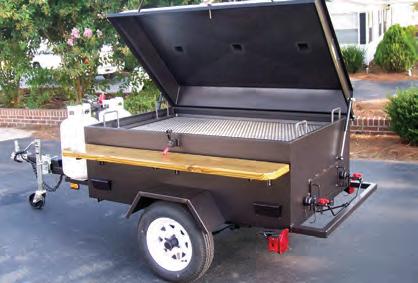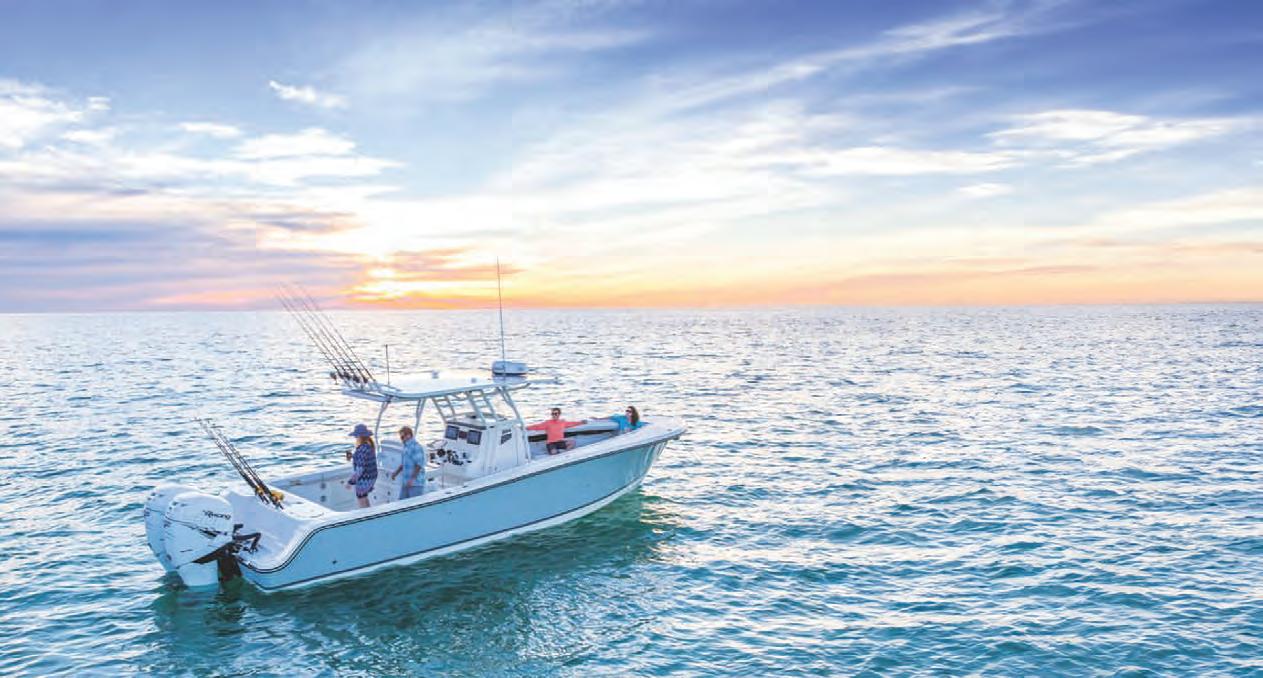














Now stronger and even more durable - the PENN® Battle® IV continues its tradition of being the workhorse of saltwater spinning reels. Newly upgraded with the Hydro Armor™ System and additional seals, the Battle IV is even more protected against saltwater intrusion and corrosion. An updated design eliminates through-holes in the spool body to further protect the reel from unwanted debris infiltrating its body and handle. Available in nine sizes and select high speed models, you can count on the Battle IV to have your back in any fight. PENN. LET THE BATTLE BEGIN™
By Ben Martin, Editor in Chief
Angling is more than just catching fsh—it’s a deeply rooted tradition that transcends generations, embodying a way of life, an art, and a profound source of pride. Tis pride isn’t merely in the size of the catch but in the entire experience, the skills refned over time, and the deep connection with nature.
Central to this pride is the mastery of technique. Whether it’s fy fshing in a mountain stream, casting a net in coastal waters, or patiently waiting with a rod and reel on a quiet lake, angling techniques require patience, practice, and a deep understanding of the environment. Anglers take pride in perfecting their skills—learning to read the water, understanding fsh behavior, and selecting the right equipment. Each successful cast, cleverly tied knot, and well-chosen lure is a testament to an angler’s dedication.
Te true pride in angling lies in the knowledge gained through experience. Seasoned anglers refect on the countless hours spent mastering their sport, from how a fy lands on the water to recognizing subtle signs of fsh activity. Angling is a journey of continuous learning, where each

trip ofers new lessons and insights, further fueling this pride.
Angling also nurtures a deep connection with nature. Being out on the water, enveloped in tranquility, allows anglers to develop a profound respect for the environment. Pride in angling is ofen linked to this connection, as anglers feel a sense of responsibility toward preserving waterways and fsh populations for future generations.
Tis respect for nature is vital to the angling tradition. Anglers ofen become conservation advocates, understanding that their sport’s enjoyment is tied to the environment’s health. Tus, pride in angling also includes a commitment to sustainable practices, ensuring that fsh stocks are maintained and habitats remain unspoiled.
For many, angling is a tradition passed down through generations. Te pride in angling is not just personal but a continuation of family or community heritage. Memories of fshing trips with parents or grandparents are cherished, and the skills learned are ofen passed on to the next generation. Tis sense of continuity creates a

bond that is both personal and collective, linking individuals to their past while forging connections with future anglers.
Te pride in being part of such a longstanding tradition is immense. Anglers feel a deep responsibility to honor the practices and ethics taught by their predecessors; ensuring the spirit of angling is preserved. Whether teaching a child to tie a knot, sharing stories of great catches, or passing on the secrets of a favorite fshing spot, the pride in angling is about nurturing a love for the sport that endures across time.












You’re looking at it! Furuno’s award-winning Radar gives you clarity & target separation like no one else. Don’t take our word for it. See for yourself. Scan here, and we’ll show you! DRS4DNXTDRS6ANXT





Selecting the right cast net is crucial for successful fshing. Here are a few tips to help you choose the best net for your needs.
1. Water Depth
Water depth afects the size of the net you should use. In shallow waters, opt for a smaller net with a shorter radius for easier control and retrieval. For deeper waters, a larger net covers more area, increasing your catch potential, but it may be harder to handle.
2. Targeted Fish Species
Te type of fsh you’re targeting determines the mesh size you need. Smaller fsh, like baitfsh or shrimp, require a smaller mesh to prevent escape. Larger fsh beneft from a larger mesh, which reduces water resistance and prevents the fsh from tearing the net.
3. Casting Ability
Your skill level should infuence your choice of net. Beginners should start with smaller,

lighter nets, which are easier to cast and control. Experienced anglers might prefer larger nets that cover more area, though they require more strength and technique.
4. Strength and Weight
may lack durability.
5. Mesh Size
Representatives from Tennessee Wildlife Resources Agency, Tennessee Department of Tourist Development, and Tennessee State Parks celebrate the ribbon cutting of the Bill Dance Signature Lakes project at the Bassmaster Classic in Knoxville on March 25, along with the project’s namesake. Photo Courtesy of the Tennessee Department of Tourist Development:
Balancing strength and weight is key. Te net must be strong enough to handle the catch but light enough for comfortable use. A heavy net can quickly become tiring, while a too-light net
Choose a mesh size based on the fsh species and environment. Smaller mesh sizes are better for small fsh, while larger meshes suit bigger fsh and allow the net to sink faster.
By considering water depth, target species, casting ability, and net strength, you can choose a cast net that enhances your cast netting success.






















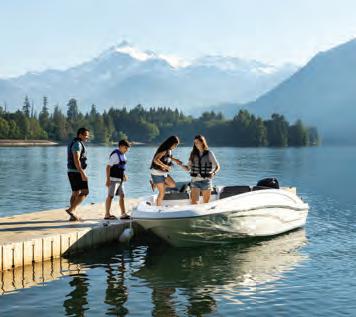





Embarking on the open water is an exhilarating experience, flled with the promise of adventure and relaxation. Whether you’re a seasoned sailor or a weekend cruiser, protecting your vessel with proper insurance is not just a choice—it’s a necessity. Explore the reasons why every boat owner should prioritize boat insurance for a worry-free voyage.
The open water can be unpredictable, with unexpected storms, collisions, or other potential accidents. Boat insurance can give you fnancial protection if there is damage to your vessel, providing coverage for repairs or replacement.
Accidents on the water can result in damage to other boats, docks, or even injuries to passengers. Boat insurance offers liability coverage, which can pay for damages or injuries you’re liable for while boating, up to specifed limits, and lawsuit costs if you’re sued. This includes damage you cause to another watercraft or if someone on or near your boat is injured and you’re found to be legally responsible.
Unfortunately, boat theft and vandalism are realities that boat owners face. Boat insurance has comprehensive and collision coverage that can protect you against events outside of your control, including theft and vandalism.
Accidents on the water may lead to injuries for you or your passengers. Boat insurance offers a range of optional medical payments coverage limits, helping to cover medical expenses if you are in an accident or someone is hurt on your boat, regardless of fault.
If you fnanced the purchase of your boat, most lenders require insurance coverage to protect their investment. Having boat insurance not only fulflls these requirements but also gives you peace of mind knowing that your fnancial interests are safeguarded.


Some water municipalities and marinas may require proof of insurance for docking or accessing certain areas. Boat insurance allows you the fexibility to explore different destinations without worrying about entry restrictions.
Emergency towing and assistance
Progressive boat insurance can include optional Sign & Glide® On-Water Towing coverage. If your boat is disabled or breaks down on the water, Sign & Glide® pays for on-water towing, jump starts, soft un-groundings, and fuel delivery.
Wreckage removal
If your boat sinks, Progressive boat insurance will cover the cost of removing your boat from the water (if removal is legally required).
Investing in boat insurance is not just about protecting a valuable asset; it’s about safeguarding the memories, experiences, and joy that come with your on-water adventures. Don’t let unforeseen circumstances disrupt your journey—navigate with confdence, knowing that Progressive boat insurance has you covered. Ensure a smooth and worry-free voyage, because when it comes to your boat, peace of mind is the ultimate luxury.
Scan to get a quote in as little as 4 minutes
learn more.




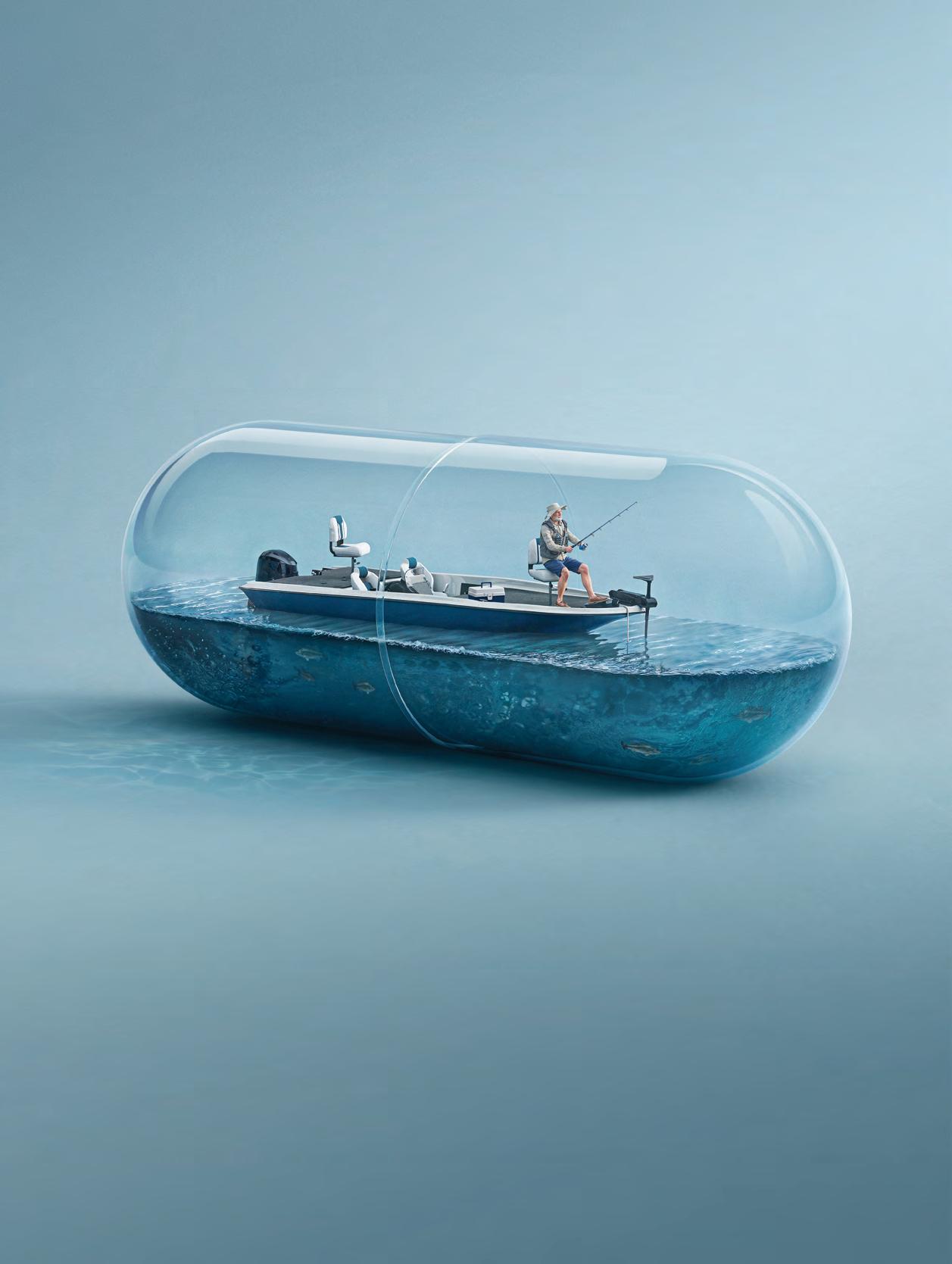






















ITim Barefoot
t’s kinda like the old Byrds song “For everything, there is a season…”


It could not be more true for the month of October, and the season for the shrimp, white shrimp to be specifc. Te (white) shrimp will start to “march” from the sounds towards the inlets and into the ocean. Tey will do this march against the current towards the ocean at night mainly. Tis is the very reason we fsh and catch shrimp at night. With the new LED lights, you can produce hundreds and even thousands of lumens with very low wattage/battery drain.
Do your own research, but I’ve found the Illumisea brand to be cost efective and super bright. When you fre up the lights, you will attract the shrimp. When you have the shrimp, you have the fsh. Pretty simple concept. I’m not saying the fsh will not eat mullets, menhaden, cigar minnows and sardines, or whatever is prevalent in your location, but what I am saying is they will key in on the shrimp and become pretty darn picky if there are a lot of shrimp present. Tey don’t have to be huge shrimp,
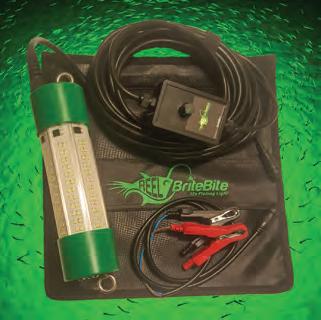
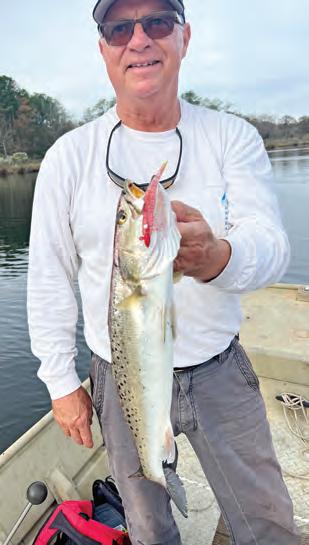
just a shrimp. I have seen really nice trout eating (keying on) the very small ones at times. If you can fnd the large 15-18 count then you’re good to go for whatever you want to catch. We call these “Tarpon Selects”. Everything in the water will eat these, from the average sized trout and drum to the largest snook and tarpon. Period. It’s the king of all baits, and October is the month to make the most of it.
For more information, visit barefootcatsandtackle.com and check out his YouTube channel.
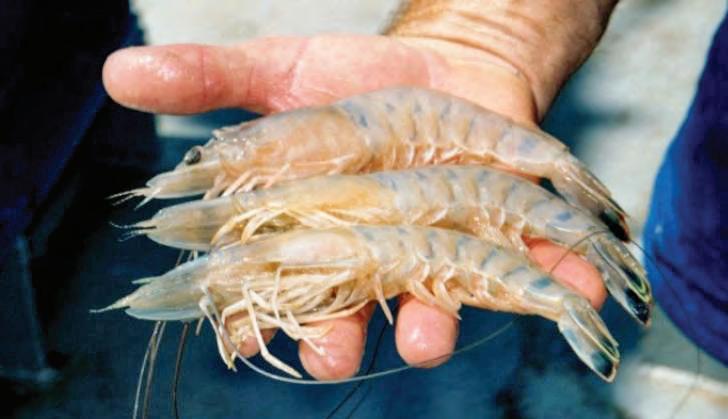
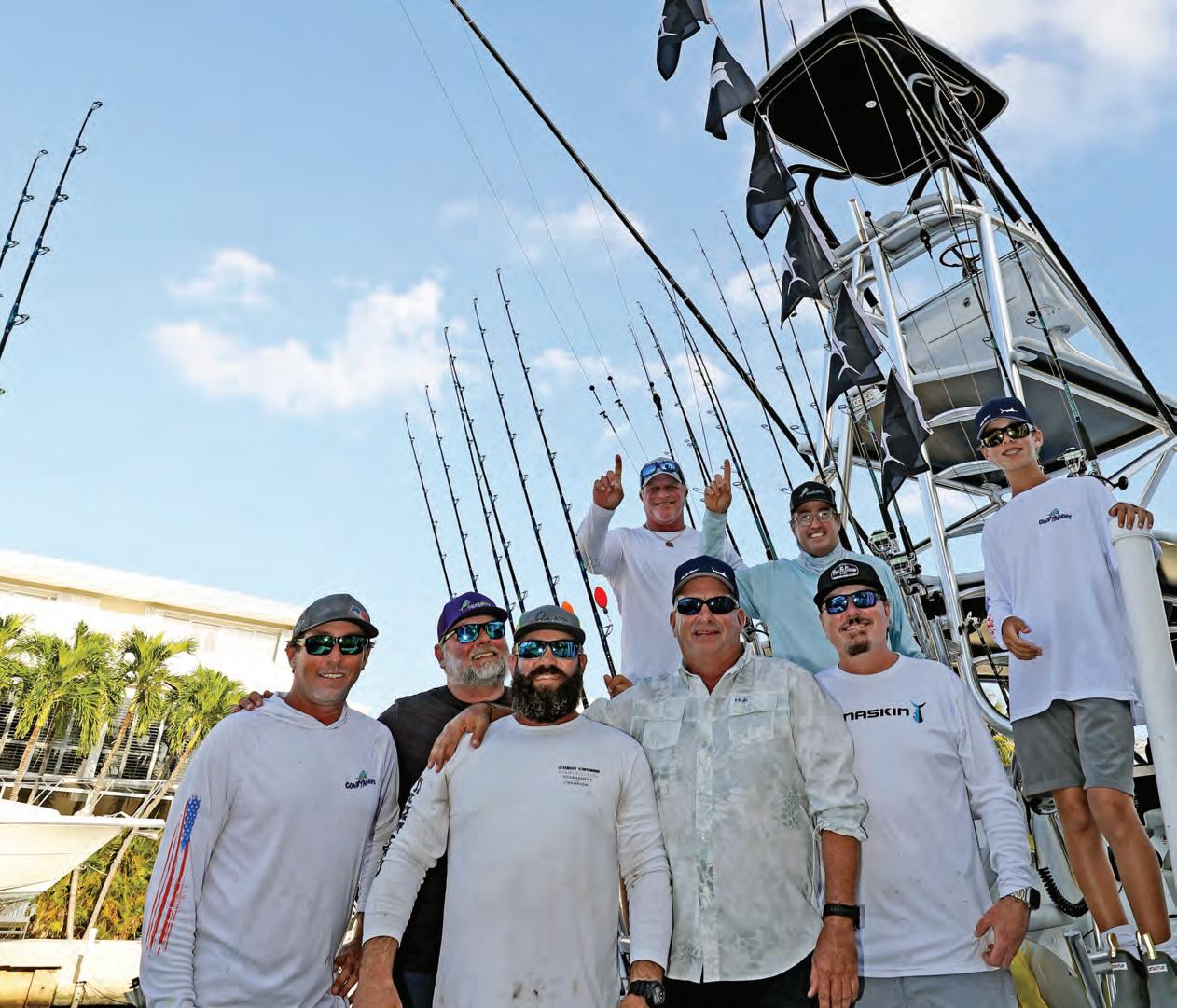
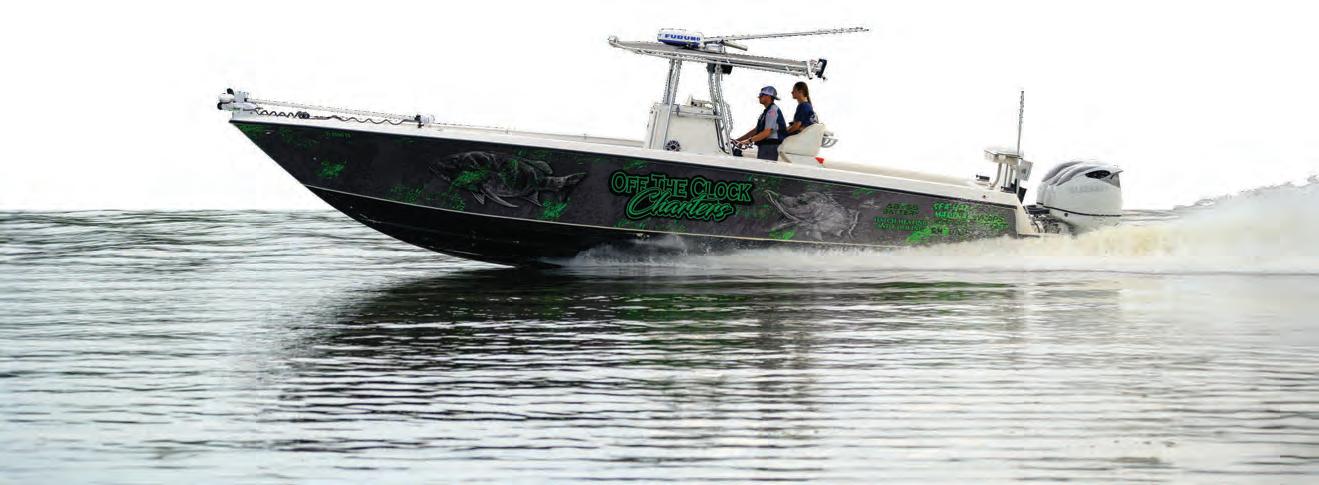









Let’s dive into why proper CPR (Catch, Photo, Release) fshing is so important for the future of our fsheries. For most anglers, fshing isn’t just a hobby—it’s a lifestyle, one we hope to pass down to future generations. But that requires us to be good stewards of the waters and ensure the fsh we release have the best chance of survival.
Here’s how to give your catch the best shot at thriving post-release, focusing on fve key areas of fsh health:
1. Gills: Gills are vital for fsh to breathe, and damage here can be fatal. Always use in-line circle hooks and avoid holding fsh by the gills. If a fsh is deeply hooked, it’s better to cut the line.
2. Skin: Fish skin acts as a barrier against bacteria and toxins. Pre-wet your hands, deck, and landing nets before touching a fsh to protect its slime layer. Avoid using cloths or bringing a fsh in too quickly to prevent damage.
3. Jaw: A damaged jaw can prevent a fsh from feeding. Never hold large fsh by the jaw alone, and avoid using barbed hooks for catch-and-release.
4. Internal Organs: Fish are not built for vertical positioning. Always support larger fsh horizontally to prevent damage to their internal organs.
5. Eyes: Fish rely heavily on their vision. Be cautious not to scrape or touch their eyes during handling.
Perfecting Your Fish Photo: Capturing that perfect fsh photo is satisfying, but it’s important to do it safely. Always face the fsh and yourself toward the light, and be mindful of what’s in the background. For solo anglers, plan ahead with a camera mount and practice using a timer or video mode.
Catch, Photo, and Release Tools:
Having the right gear can make a big difference:
• Fish grips for securing the fsh
• Needle-nose pliers for easy hook removal
• De-hooker to minimize contact
• Waterproof phone case to protect your gear
• Camera mount for solo photos






Darlene Shuman, President, Salt Strong Tampa Chapter posing with a 43 inch redfsh prior to quickly releasing it in Venice, LA.

Being a responsible angler means practicing and promoting proper catch, photo, and release techniques. Let’s all work together to protect our fsheries for future generations, educating others along the way.
And remember—if you see someone holding a fsh incorrectly, kindly guide them, don’t shame them. We’re all here to enjoy the sport and preserve it for years to come.
Te Salt Strong Fishing Club is an inspiration for inshore saltwater anglers. Salt Strong chapters are located from Texas to Florida to the Carolinas and ofer club members and their guests the opportunity to meet local anglers, learn from informative speakers, participate in conservation activities, and win awesome giveaways.
Visit SaltStrong.com and SaltStrongAlliance.com to learn more.





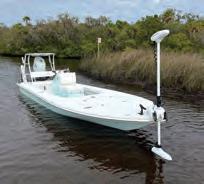


The Florida Fish and Wildlife Conservation Commission (FWC) has celebrated a major achievement with its TrophyCatch program reaching 15,000 approved trophy bass catches. Launched in 2012, TrophyCatch invites anglers to submit photos and documentation of bass weighing 8 pounds or more. Te program aims to enhance understanding and conservation of Florida’s bass population while rewarding participants for their impressive catches.
Tom Graef, Director of FWC’s Division of Freshwater Fisheries Management, highlighted the milestone as a testament to both the enthusiasm of Florida’s anglers and the state’s exceptional fshing opportunities. He noted that the data collected is crucial for ongoing conservation and management eforts.
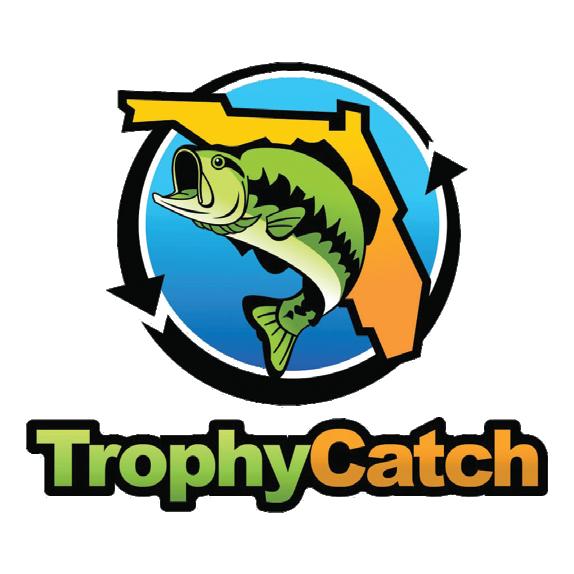
Te program’s success refects Florida’s status as a premier bass fshing destination. It gathers valuable data on bass sizes, weights, and locations, which aids in managing and sustaining the state’s fsh populations. Industry partners such as Bass Pro Shops, Mercury Marine, and Phoenix Bass Boats have been instrumental in supporting TrophyCatch, rewarding anglers and contributing to freshwater management.
TrophyCatch is not just a promotional program; it’s a citizen-science initiative that helps in the conservation of trophy bass fshing. Anglers interested in participating and being included in this year’s boat drawing can visit TrophyCatch.com for more information and to register.
Te milestone of 15,000 trophy catches underscores the program’s success and the strong community of anglers dedicated to preserving Florida’s bass fshing heritage.


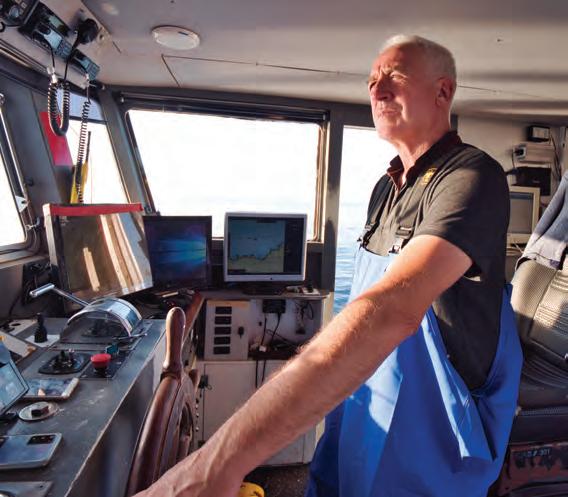

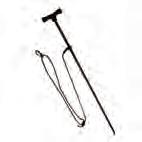



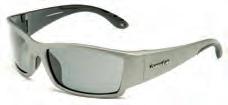





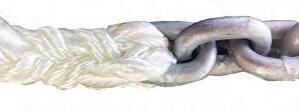



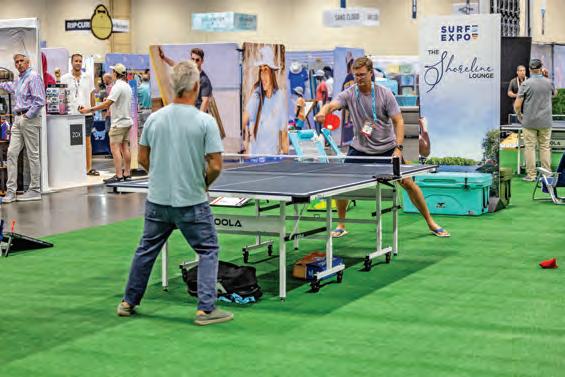

Surf Expo, the premier watersports and coastal lifestyle tradeshow, will return to the Orange County Convention Center in Orlando, Florida, from January 8-10, 2025. Te event will feature an expansive selection of exhibiting brands, a full lineup of events, and great networking opportunities. “We had an exceptional September show, which has only heightened our excitement for what’s to come in January,” said Surf Expo Show Director Roy Turner. “From major brands to emerging start-ups, retailers can connect with key players and explore the latest innovations. We are excited for the January show foor to be flled with energy as brands showcase their products to retailers,” adds Turner.
Surf Expo is the go-to market for watersports and outdoor retailers to explore the newest styles and trends, ofering the opportunity to stock your shelves with the latest in marine related products, top surf brands, hard goods, apparel, footwear, swimwear, accessories, gifs, and souvenirs. Retailers can discover the newest brands and products related to fshing, surfng, paddling, hiking, camping, wake surfng, tubing, or simply enjoying the sun. Surf Expo provides everything needed for customers who are passionate about the waterman and outdoor lifestyle.
“Consumers today are looking for unique and new products. Surf Expo allowed us to shop and locate lot of interesting fnds to bring some freshness into our store so we can give our shoppers a reason to keep coming back.” says Steve Green of High Mountain Sports.
Te January 2025 show will feature brands across multiple categories including the Shoreline category. Shoreline at Surf Expo features brands that specialize in inshore and ofshore apparel and accessory products; sportswear, technical apparel and gear, footwear, outerwear, and watersports hardgoods as well as games and accessories for enthusiasts to transition from a day on the water to stretching out on land. It caters to businesses involved in outdoor activities and recreation, creating valuable crossover opportunities for buyers and manufacturers.
Surf Expo fosters community, commerce, and connections. Te atmosphere at the event fosters the ideal environment for direct engagement between retailers and brands. Green added, “We love the vibe at Surf Expo. It’s easy to get serious business done with key players, but not so serious that you can’t enjoy happy hours and events at the show too. We were able to connect with multiple sales managers and met several founders at the September show.”
Surf Expo continues to support and enhance growth and innovation within the watersports and coastal lifestyle industries. In January, Surf Expo will feature a full schedule including daily fashion shows, retailer learning labs, networking events including happy hours and parties as well as the 2025 Florida Shape Of
For more information about the show, or to register to attend January 8-10, 2025 in Orlando, visit www.surfexpo.com.

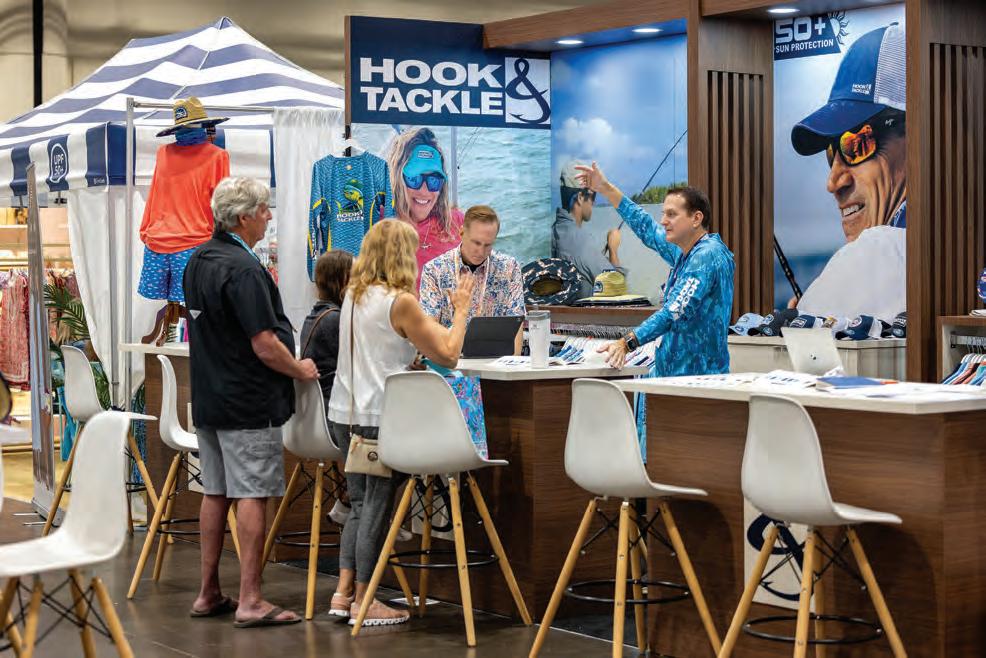
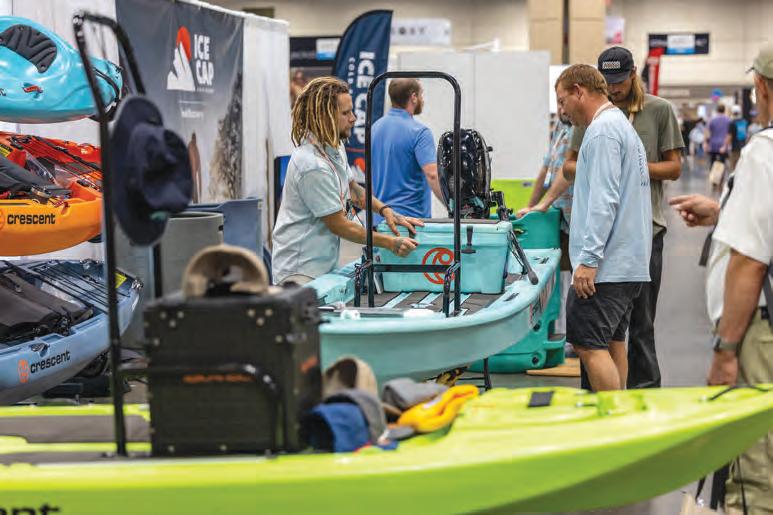
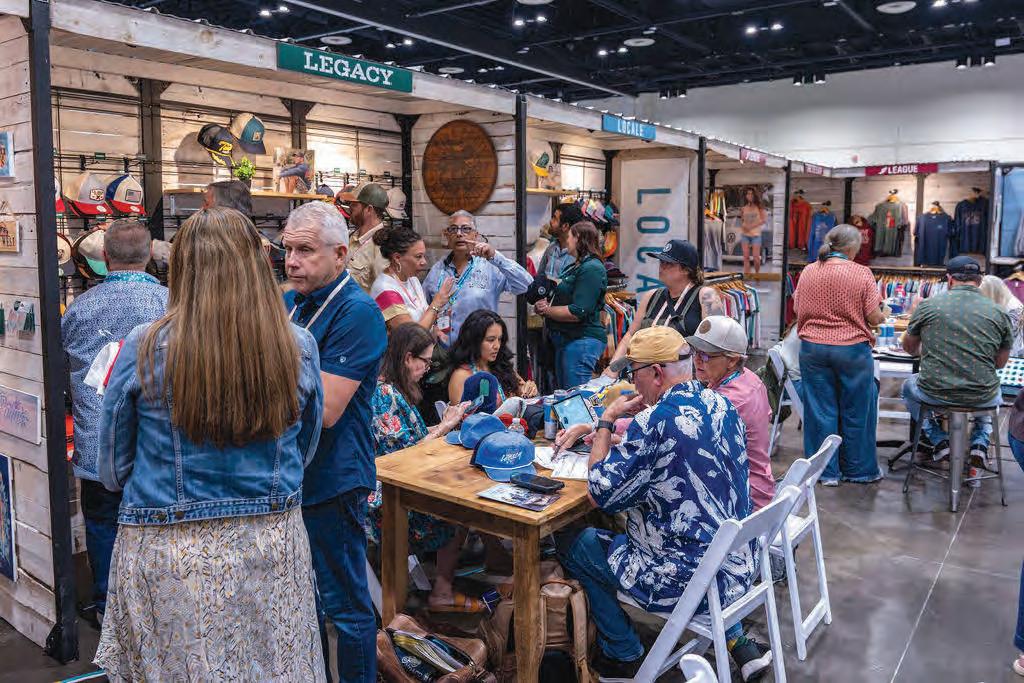
By CAM Staf

Stone crab season in Florida is a much-anticipated event, drawing both commercial and recreational anglers eager to harvest these prized crustaceans. Te season typically runs from October 15 to May 1, a period carefully regulated to ensure the sustainability of the stone crab population. With its delicious, sweet meat, the stone crab is a sought-afer delicacy, and understanding the rules, techniques, traps, and bait is crucial for a successful and responsible harvest.
Many anglers opt to dive for stone crabs, using snorkeling or scuba gear to search for crabs in their natural habitats. Stone crabs typically reside in rocky or muddy bottoms, hiding in crevices or burrows. Divers must exercise
caution, as the crabs’ strong claws can deliver a painful pinch.
Te Florida Fish and Wildlife Conservation Commission (FWC) enforces strict regulations to protect stone crab populations. Only the claw of the stone crab may be harvested, as the crabs can regenerate lost limbs. When retrieving a crab, it is essential to handle it gently to avoid injuring the creature or causing unnecessary stress. Te claw should be twisted of carefully, applying steady pressure at the joint until the claw releases.
It is illegal to remove both claws from a single crab, and the harvested claw must meet a minimum size requirement of 2-7/8 inches, measured from the tip of the claw to the frst joint. Crabs must be returned to the water immediately afer the claw is removed. Improper removal can result in the death of the crab, which is both unethical and a violation of FWC regulations.
Te FWC also limits the number of traps allowed. Recreational anglers can use up to fve traps, while commercial fshers are permitted more, provided they hold the appropriate licenses. Each trap must be clearly marked with the owner’s information, including a buoy with the angler’s name and address. Additionally, traps must be checked at least once every fve days to ensure that crabs are not kept for too long, which could lead to their death or reduce their ability to regenerate claws.
Stone crab traps are specially designed to capture these crustaceans without causing harm. Te traps are typically rectangular and made of plastic or wood, with openings that allow crabs to enter but make it difcult for them to escape. Inside, the trap is baited with food that attracts the crabs, such as fsh heads, chicken necks, or other types of seafood. Te scent of the bait lures the crabs into the trap, where they remain until the trap is retrieved.
When setting traps, location is key. Stone crabs are ofen found in shallow waters near jetties, docks, mangroves, or rocky shorelines. Traps should be placed in areas where crabs are known to feed, ideally on a sandy or muddy bottom where the crabs feel safe.
Stone crab season in Florida is more than just an opportunity to enjoy a delicious seafood delicacy; it is a tradition steeped in respect for the environment and the species. By following the FWC’s rules and regulations, using humane harvesting techniques, and selecting the right traps and bait, anglers can enjoy a successful and sustainable stone crab season. Understanding these essential aspects of stone crab harvesting will enhance your experience and contribute to the ongoing preservation of this valuable resource.
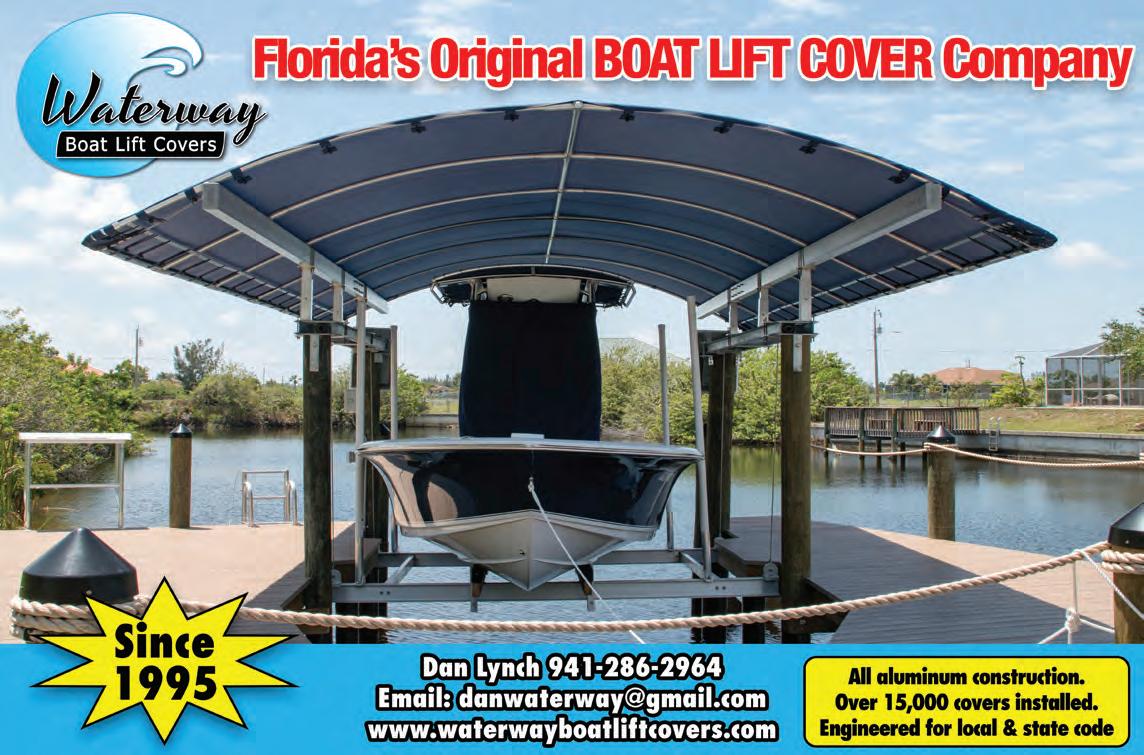







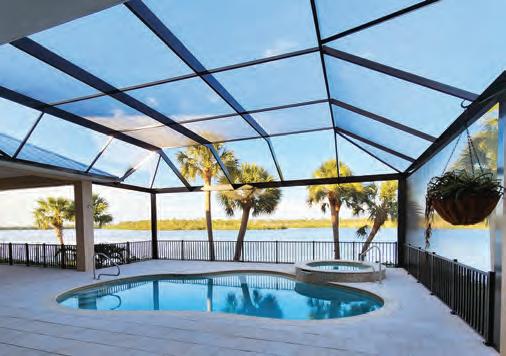




by NestorAlvisa
As we get into October, one of my favorite seasons to fish South Biscayne Bay is upon us. As we push into our Fall season, we start to see bait become more abundant and much easier to find.
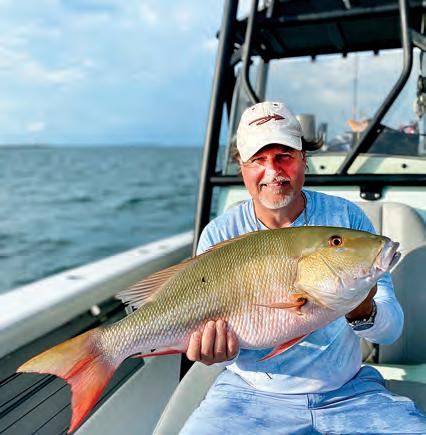
On a typical charter I’ll start my morning looking for diving pelicans or terns working schools of pilchards around the beach, grass flats or channels. Once located, filling up your live wells with a couple throws of the net won’t take long. Once I’m loaded up with enough bait the fun begins.
I’ll start by picking a certain finger channel, inshore wrecks or patch reefs and anchor up using my Minn Kota Quest trolling motor. Being able to anchor your boat with the push of a button has completely changed the way we fish. Once anchored I’ll start live chumming with the pilchards and it typically doesn’t take too long to see something start to chase or blow up on the freebies tossed! A small circle hook, a 1/4 oz jig head or 1/16oz jig head rigged with a pilchard will typically do the trick. Our targeted fish during this time are mutton snappers, mangrove snapper, yellow jacks, gag groupers and porgies.
Nestor Alvisa HookedOnFlamingo.com @hooked_on_flamingo_charters 786.387.2443



by Capt. Bouncer Smith
Well, I hope you got in on the mullet run. Now that most of the mullet have gone by, the big excitement will be ballyhoo migrating South anywhere from the first reef and out to 5 or 6 miles offshore. Watch for active frigate birds working anywhere from 30 feet of water on out. You really need some live ballyhoo in your live well to “match the hatch” when you find those frigate birds or showering ballyhoo. You may find anything from cero mackerel, barracudas and sharks to big mahi, sailfish, mutton snappers and grouper. If the surface action is slow, slow troll live ballyhoo on the surface and down deep primarily in 60 to 250 feet.

Offshore you should find good mahi action. With the good swordfish action in September, we should have even better swordfish action this month. On the edge (75 to 250 feet of water) trolling for wahoo should be very good around the full moon. Kingfish and sailfish should provide good action all month. This is one month when live ballyhoo slow trolled behind the boat might out fish the kites. But if it’s windy you still have to fire out those kites. Another major bait around now is very small bonita. You need a very big round live well or fire them back out as you catch them to fish them live. Bonita is a great bait from the surface to the bottom. You might get lucky and be able to buy a R&R bonita bucket, a new product that holds several small bonita in individual small tuna tubes in a five-gallon bucket.
Inshore the causeway bridges should be good for tarpon, jacks and snook at night, and around canal mouths during the day. With a little bit cooler weather and water temperatures you may find better action targeting yellow jacks and mutton snappers in South Biscayne Bay and the finger channels. I hope to see you on the water the second half of the month. Please help me support the IGFA Legendary Captains October 31st, and The Billfish Foundation November 1st, by attending these great events.
Capt Bouncer Smith
305-439-2475
captbouncer@bellsouth.net
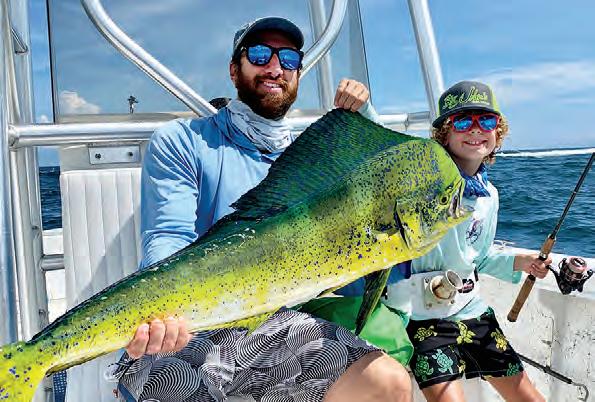

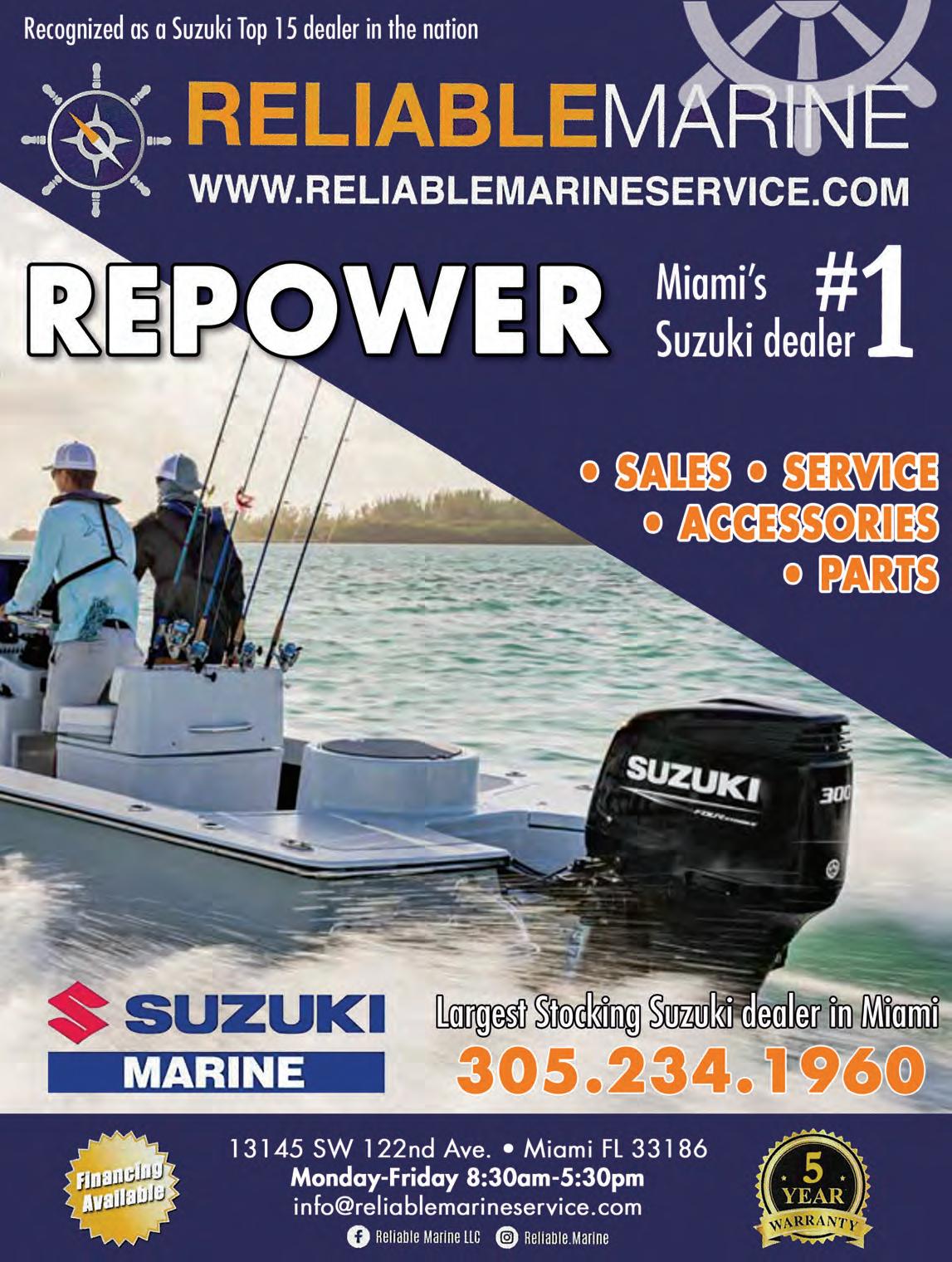


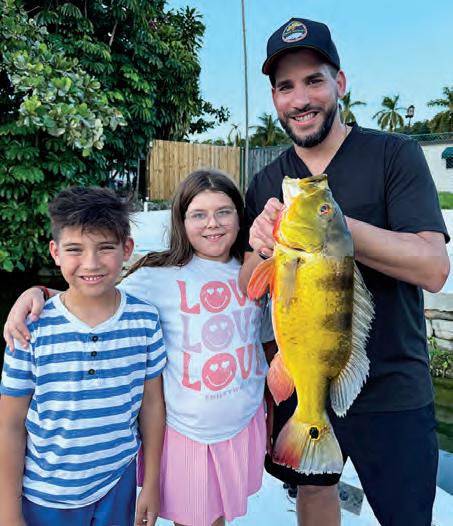
by Captain Mike Tojdowski & Captain TonyTojdowski
Peacock bass, draw anglers from all over the world to the unique network of lakes & maze of canals the magic city has to offer. Originally from the Amazon Basin, these colorful and aggressive fish were introduced to South Florida in the 1980s to control invasive species and have since thrived in the warm, subtropical waters. Known for their vibrant colors, hard-hitting strikes and pound for pound the strongest freshwater fish in North America hands down. Peacock bass offer an exciting challenge for both novice and experienced fishermen.
The Miami canal system provides an ideal habitat for peacock bass. These fish favor warm, shallow waters with plenty of structure, such as submerged rocks, tree branches, and man-made debris, where they can hide and ambush prey. Popular spots for peacock bass include the Tropical Parks public lakes and the network of residential canals that snake through the city’s suburbs. Most of these waterways are easily accessible, either by boat or from the shore, making it convenient for anglers to get in on the action.
Peacock bass are known for their aggressive nature, so lures that mimic smaller fish like shad, bluegill, or minnows work particularly well. Jerkbaits, crankbaits, and soft plastic lures with bright colors can entice them. Live bait, such as shiners, is also highly effective, especially for those looking to maximize their chances of catching larger specimens.
The key to success is casting near structure and retrieving your lure with quick, erratic movements to trigger a reaction bite. Peacock bass tend to be territorial, so they’ll often strike at anything that enters their zone.
The best time to fish for peacock bass in Miami is during the late morning or late afternoon hours, These fish thrive in water temperatures above 75°F, so hot, sunny days often produce the most action.
Capt. Mike Tojdowski & Capt. Tony Tojdowski
Urban Legends Fishing Charters
Call/Text 305-998-3375
Facebook / Instagram
@Urbanlegendsfishing or check out our website ULFish.com
,
by Captain Ray Rosher, Contributing Writer
September and October are the months that are made famous by the mullet runs on the East Coast. Driven especially by Northeast winds, massive schools of mullet of all sizes line the beaches, causing one of the biggest Planet Ocean spectacles that you will probably ever witness in Florida… Packs of sharks, tarpon, snook and jack crevalle are the most common predators. Early mornings, especially calm ones, produce some of the most amazing scenes of predators pursuing prey that you’ll ever see anywhere in the world.
We typically use our R&R slide baits in a mullet pattern or all white but it’s also hard to beat throwing a live or cut mullet into the frenzy.
On the offshore scene there are still some dolphin around until we start getting the first few cold fronts in October or November. Another
welcome visitor in the fall are small medium wahoo on the floating debris out in dolphin country. Many days in September and October we’ve got double digits mostly releasing the smaller fish. The occasional 10 to 20 pounder definitely fills up a sushi tray.
We’ve been catching quite a few bonita on the kites lately, as well as some yellowtail snapper on the reef and vermillion and silk snappers in the deep water.
No matter which one you choose, we can definitely enjoy a little bit of cooler weather on the way.... and Football!!!
Hope you get out there.
Capt. Ray Rosher
305-788-3474 • Ray@missbritt.com www.missbritt.com
Miss Britt Charters Instagram @missbrittcharters





por Capt. Bouncer Smith
Espero que hayas aprovechado la carrera del salmonete, pues ahora que la mayoría de ellos se han ido, la gran emoción del mes será el ballyhoo, que estará migrando hacia el sur desde cualquier punto del arrecife y a 5 o 6 millas fuera de la costa.
Esté atento a las fragatas activas que suelen moverse en cualquier lugar a partir de 30 pies de agua en adelante. Necesitará algunos ballyhoo vivos en su vivero para «igualar la eclosión». Podría encontrar desde macarela cero, barracudas y tiburones, hasta grandes mahi, pez vela, pargos criollos y meros. Si la acción en la superficie está lenta, arrastre lentamente el ballyhoo vivo tanto en la superficie como en profundidades de entre 60 y 250 pies.
En alta mar debería encontrar gran diversión con el Mahi; de igual forma, dada la buena acción del pez espada en septiembre, deberíamos tener aún mejor acción este mes. Aproveche también para la pesca de curricán para el wahoo (en el borde a 75250 pies de agua) ya que suele ser buena alrededor de la luna llena. Por otro lado, la caballa real y el pez vela deberían proporcionar entretención durante todo el mes.
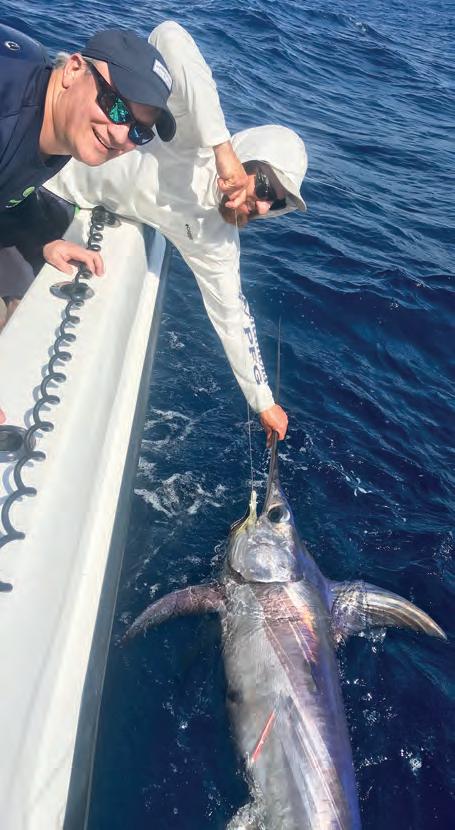
Este es un mes en el que el ballyhoo vivo, arrastrado lentamente detrás del bote, podría superar a las cometas; pero, si hay viento, igual tendrá que lanzar dichas cometas. Otro cebo importante ahora mismo es la bonita pequeña, que es una gran carnada desde la superficie hasta el fondo. Para pescarlas vivas necesita un pozo redondo muy grande o estimularlas a medida que las pesca. Puede que tenga suerte y pueda comprar un cubo para bonitas R&R, un nuevo producto que contiene varias bonitas pequeñas, en tubos individuales para atunes pequeños, dentro de un cubo de cinco galones.
En la costa los puentes deberían ser buenos para el sábalo, el jurel y el róbalo durante la noche, mientras que los alrededores de las bocas de los canales durante el día. Ahora que el tiempo es un poco más fresco y las temperaturas del agua van bajando se puede encontrar una mejor acción con los jureles amarillos y pargos en el sur de la Bahía de Biscayne y los canales.
Como nota final: por favor, ayúdeme a apoyar el IGFA Legendary Captains 31 de octubre, y la Billfish Foundation 1 de noviembre, asistiendo a estos grandes eventos.
¡Espero verles en el agua durante la segunda mitad del mes!
Capt Bouncer Smith
305-439-2475
captbouncer@bellsouth.net

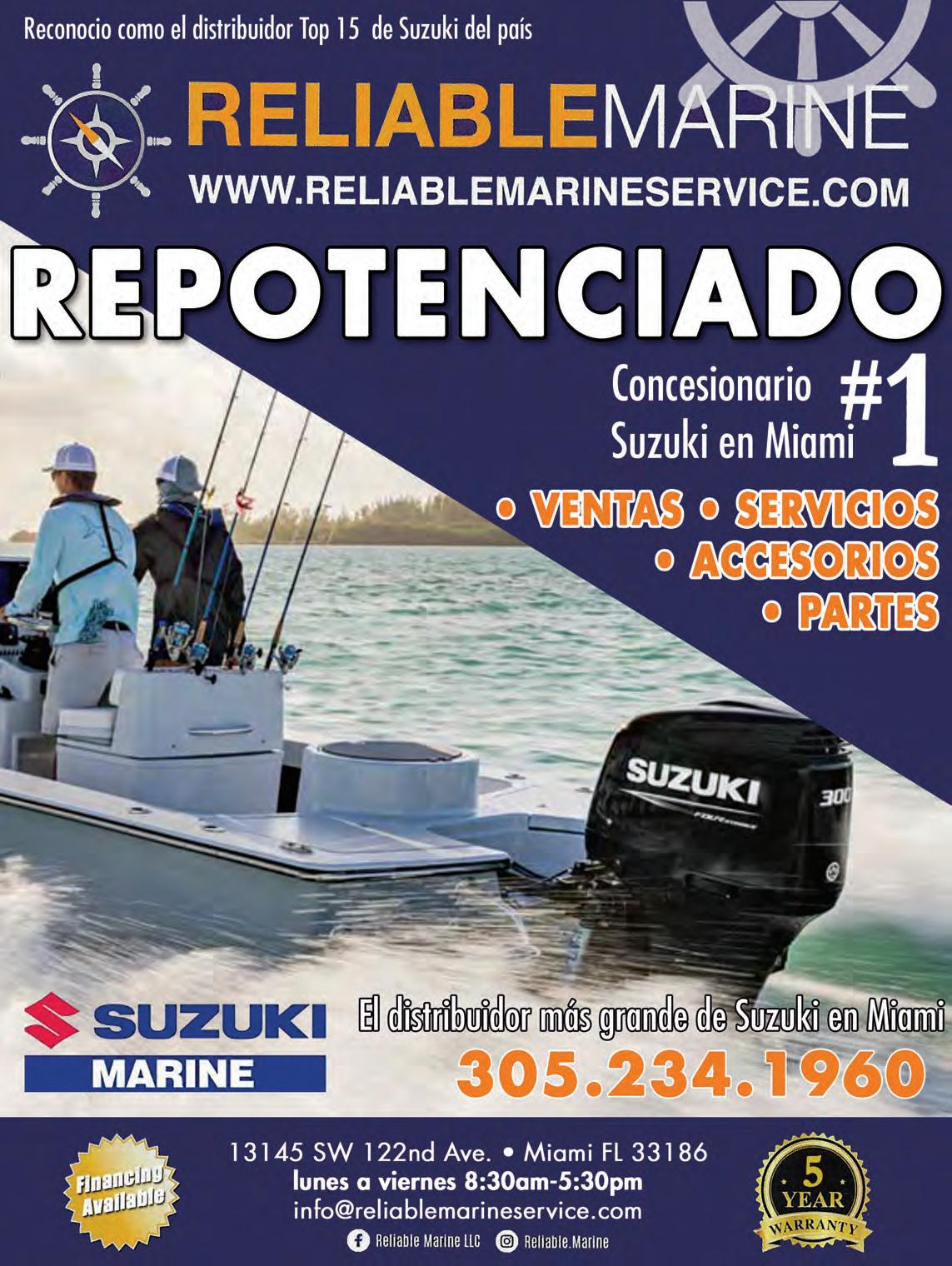



por Nestor Alvisa
Amedida que nos adentramos en octubre, llega una de mis estaciones favoritas para pescar en South Biscayne Bay. La temporada de otoño trae mayor abundancia de cebos, por lo que son más fáciles de encontrar.
Iniciaré la mañana en un chárter típico buscando pelícanos o charranes que estén rodeando bancos de sardinas alrededor de la playa, en bajos de hierba o canales. Una vez localizados, no tardo mucho en llenar los viveros con un par de lanzamientos de la red y, una vez cargado con suficiente cebo, comienza la diversión.
Empiezo eligiendo un canal, un pecio o un arrecife y anclo con mi motor de curricán Minn Kota Quest. Poder fondear el barco con sólo pulsar un botón ha cambiado por completo nuestra forma de pescar. Una vez fondeado, comienzo a cebar con las sardinas y no suele pasar mucho tiempo para ver algo que empieza a perseguir o volar alrededor de los señuelos lanzados. Un pequeño anzuelo circular, una cabeza de jig de 1/4 oz o una cabeza de jig de 1/16oz montada con una sardina suele hacer el truco. Nuestros peces objetivo durante este tiempo son pargos, pargos de manglar, jureles amarillos, meros y besugos.
Nestor Alvisa • HookedOnFlamingo.com @hooked_on_flamingo_charters • 786.387.2443

Orgulloso Patrocinador de la Sección Española.





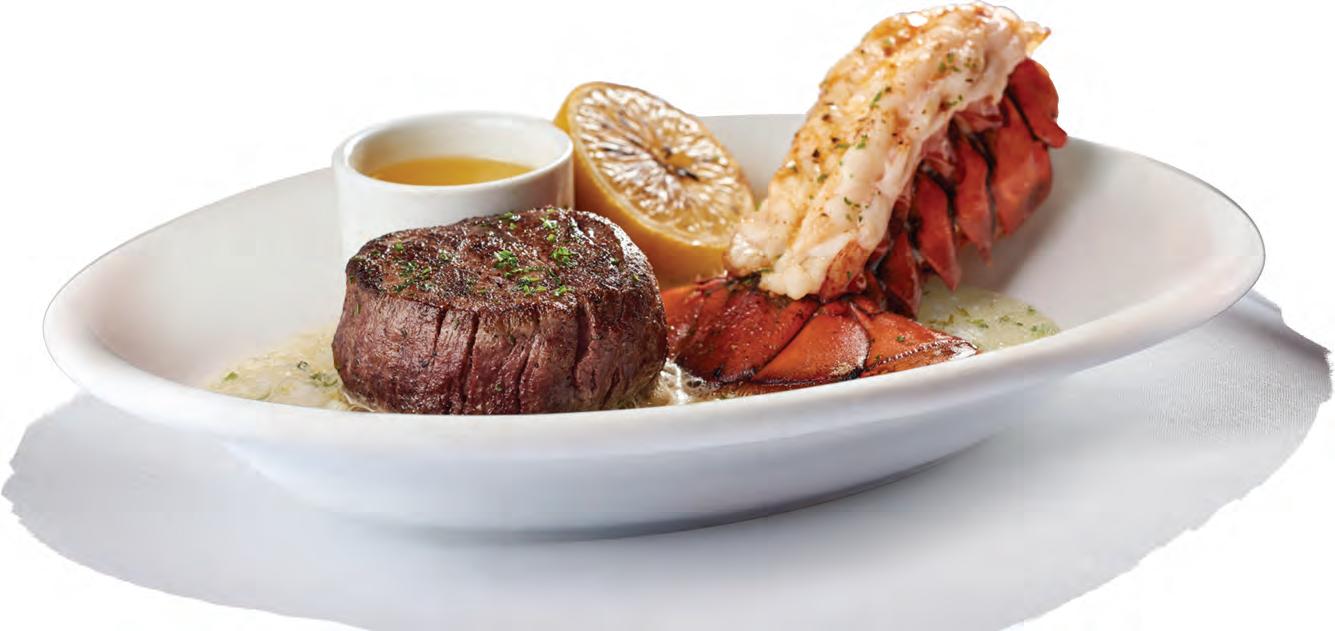
Make steak the catch of the day with a celebratory stop at Ruth's Chris. After a day on the water, join us for signature sizzle, hand-crafted cocktails and legendary hospitality.
PONTE VEDRA BEACH
814 A1A N., Suite 103 Ponte Vedra Beach, FL 32082 904-285-0014
JACKSONVILLE
1201 Riverplace Blvd. DoubleTree by Hilton Hotel, Jacksonville, FL 32207 904-396-6200
DESTIN
924-A-Senate Street, Destin, FL 32541 850-837-7884
ORLANDO 7501 W. Sand Lake Rd. Orlando, FL 32819 407-226-3900
WINTER PARK
480 N. Orlando Ave. Suite 100B Winter Park, FL 32789 407-622-2444
LAKE MARY
80 Colonial Center Pkwy. Lake Mary, FL 32746 407-804-8220
TAMPA
1700 N. Westshore Blvd. Tampa, FL 33607 813-282-1118
ST. PETERSBURG
131 2nd Ave. N. St. Petersburg, FL 33701 727-821-4139
SARASOTA
6700 S. Tamiami Trail Sarasota, FL 34231 941-924-9442
LAKEWOOD RANCH
6490 University Pkwy. Sarasota, FL 34240 941-315-6669
WEST PALM BEACH
651 Okeechobee Blvd. West Palm Beach, FL 33401 561-514-3544
BOCA RATON 225 NE Mizner Blvd. Suite 100
Boca Raton, FL 33432 561-392-6746
BONITA SPRINGS
23151 Village Shops Way Suite 101, Coconut Point Mall Bonita Springs, FL 33928 239-948-8888
FORT LAUDERDALE
2525 N. Federal Hwy Fort Lauderdale, FL 33305 954-565-2338
AVENTURA
2980 NE 207th St. Aventura, FL 33180 305-912-1266
CORAL GABLES
2320 Salzedo St. Coral Gables, FL 33134 305-461-8360
JUPITER
105 Breakwater Ct, Jupiter, FL 33477 561-831-4440

By Grayson Louis
The mullet run is a captivating natural event that draws anglers, wildlife enthusiasts, and photographers to the southeastern United States each fall. Tis annual migration of mullet, a resilient and abundant fsh species, plays a crucial role in the marine ecosystem and holds cultural and economic signifcance for coastal communities.
As temperatures begin to drop in September and October, millions of mullet—both striped mullet (Mugil cephalus) and white mullet (Mugil curema)—begin their southward migration along the Atlantic coast and the Gulf of Mexico. Tey are driven by an instinctual need to spawn in the warmer waters near the Florida Keys. Tis migration, which can last several weeks,
ofen features schools of mullet stretching for miles along the coastline.
Te mullet run is vital for the species’ survival, ensuring the continuation of their population. Mullet are prolifc breeders, releasing eggs in open water, which are fertilized and hatch into larvae. Tese larvae then drif with the currents back to estuaries, where they fnd a rich, sheltered environment to grow and mature before starting their own migration journeys.
For predators, the mullet run is a feast. Large schools of mullet attract a diverse array of marine life, including gamefsh like tarpon, snook, and redfsh, as well as apex predators like sharks. Birds of prey, such as ospreys and pelicans, also join in, diving into the schools to catch their fll. Tis abundance of food creates a feeding frenzy that is both a boon for wildlife and a breathtaking spectacle for observers.
Anglers eagerly anticipate the mullet run, as it ofers a unique opportunity to catch trophy-sized fsh that are otherwise elusive. Many anglers plan their entire year around this event, knowing that the presence of so many mullet will increase their chances of hooking a prized tarpon or snook. Te mullet run also supports local economies, as the infux of tourists and fshing enthusiasts boosts business for bait shops, boat rentals, and coastal restaurants.
Beyond its ecological and economic importance, the mullet run holds cultural signifcance in the regions it touches. Coastal communities have long celebrated the mullet run with festivals, fshing tournaments, and other events that bring people together to appreciate the sea’s bounty. Tese traditions underscore the deep connection between humans and the marine environment, highlighting the importance of conservation eforts to protect this natural treasure for future generations.
Despite their resilience, mullet populations face threats from habitat loss, and pollution. Conservation measures, such as fshing regulations and the protection of estuarine habitats, are essential to ensuring the continued success of the mullet run. By preserving the conditions that allow this migration to thrive, we safeguard a vital food source for many species and maintain a cultural and economic asset for coastal communities.
Te mullet run is more than just a migration; it is a reminder of the intricate and interconnected web of life in our oceans. As we marvel at the sight of countless fsh moving as one, we are also called to recognize our role in preserving the delicate balance of the marine ecosystem


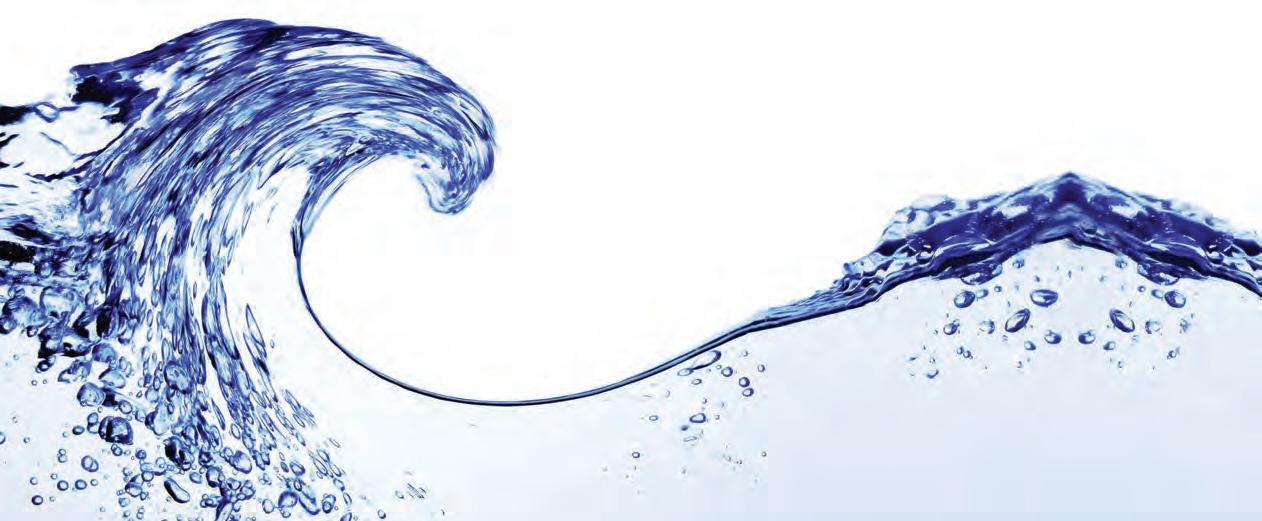


















To support their mission to restore and protect Florida's waters, Captains For Clean Water (CFCW) is rafing of a one-of-a-kind boat custom crafed by Hell's Bay Boatworks, along with a literal boatload of gear from partner brands Orvis, YETI and Costa Del Mar.
Tis year's skif is a Hell's Bay Professional 17.8, the ultimate shallow water technical poling skif specifcally designed for the pursuit of fsh in the most challenging shallow water conditions. Carefully engineered for poling the fats with stealth, this skif is outftted with a Mercury 60R Motor, T-H Marine Atlas hydraulic Jack Plate Micro Jacker, custom SeaDek foor kit, Ram-Lin aluminum trailer, Simrad NSS9 evo3S multifunction display, a Power Pole 6f. Pro Series and a Stify Guide Series - Graphite 22’ Push Pole.

But what really makes this boat unique are the special touches done in collaboration with Orvis. Sporting a multi-tone grey color combination and custom cork SeaDek foor kit, this boat's look and feel was inspired by the Orvis Helios line of fy rods—of which there are four included with the package.
Captains For Clean Water is a Florida-based 501(c)3 grassroots nonproft on a mission to restore and protect aquatic ecosystems for the use



and enjoyment of all. Founded in 2016 by fshing guides, CFCW has united the outdoor industry, business community, and concerned citizens at the forefront of the fght for clean water—the lifeblood of Florida’s economy and $85.9 billion tourism industry.
"In 2016, we started as a couple of fshing guides who were fed up with Florida’s poor water management practices—the toxic discharges from Lake Okeechobee that were poisoning the coasts, starving the Everglades, and devastating the estuaries our livelihoods depended on. And we were

convinced that if everyone just knew about these issues, they would’ve been fxed long ago. Te solution was known through a plan called Everglades Restoration, but progress had been delayed for decades due to lack of political will and public awareness,” said Capt. Daniel Andrews, Captains For Clean Water’s Co-Founder and Executive Director. “We never set out to start an organization, but as we peeled back the layers, we realized we were neck-deep in a ‘David-versus-Goliath’ fght to save our waters. We’ve kept our roots within the guide community and efectively engaged concerned citizens, business communities, outdoor brands, and anglers across the country. As a result, progress is happening at a record pace as more people than ever get involved in the fght for clean water, but we still have a long way to go and we need your help." Supporters can purchase tickets for a chance to win now through December 31, 2024. Every ticket purchase supports CFCW’s mission to protect and restore Florida’s water resources for the use and enjoyment of all. A winner will be drawn at random on January 12, 2025 at Backyard Social in Fort Myers.
To purchase rafe tickets and to learn more, visit captainsforcleanwater.org




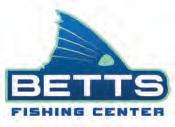


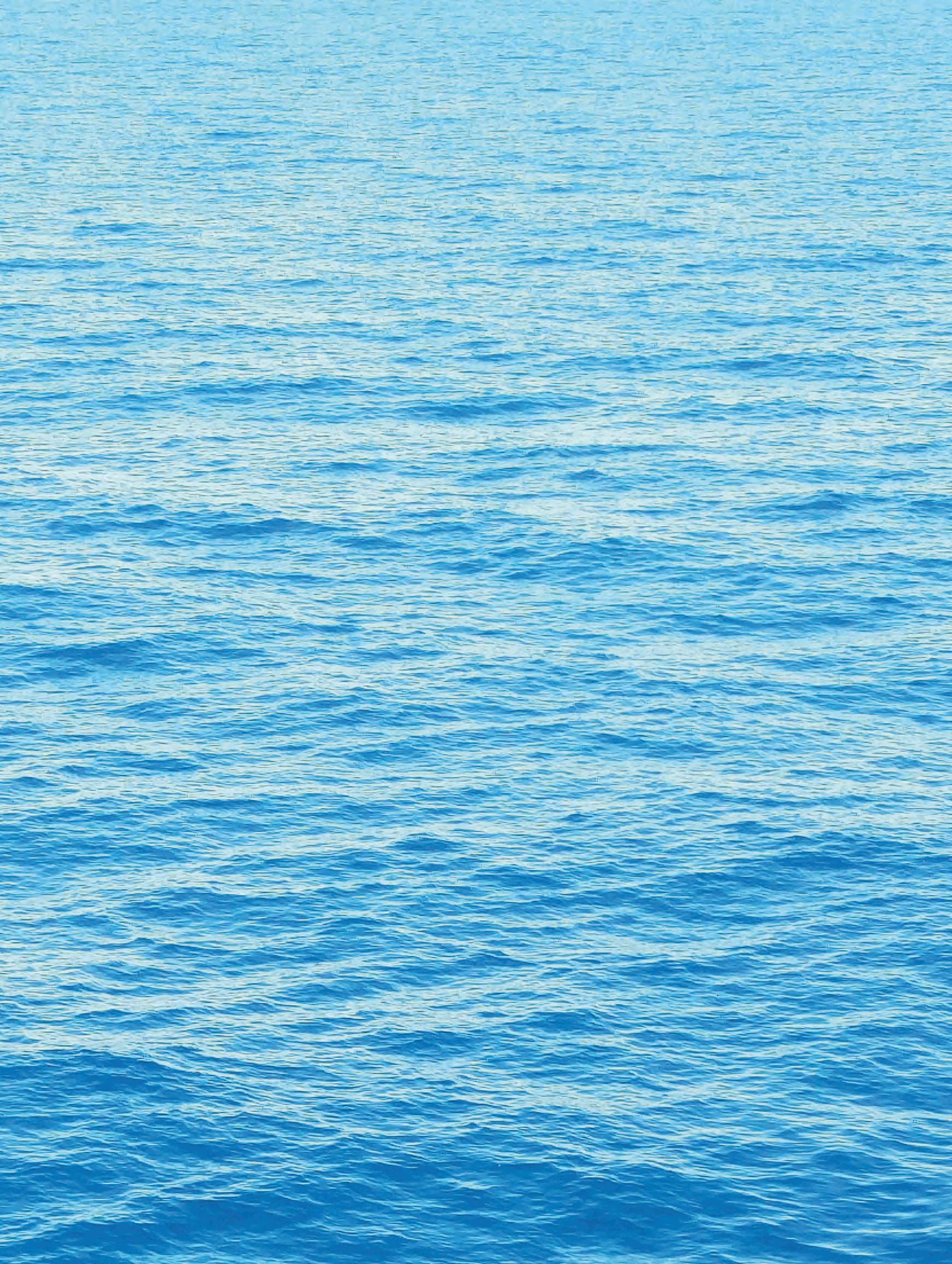



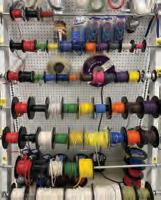


















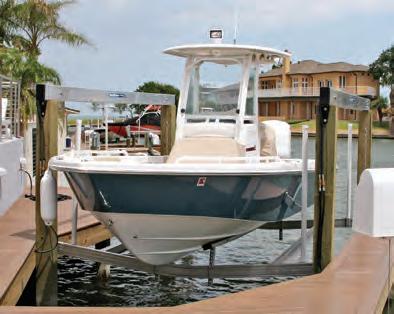


ShoreStation hydraulic boat lifts are a reliable choice for coastal residents and boating enthusiasts alike. Their strong construction, made with corrosion-resistant materials, allows them to withstand harsh environmental conditions, including sun, storms, and saltwater damage. ShoreStation provides a steadfast solution for protecting waterfront investments, ofering peace of mind to owners in the Sunshine State.
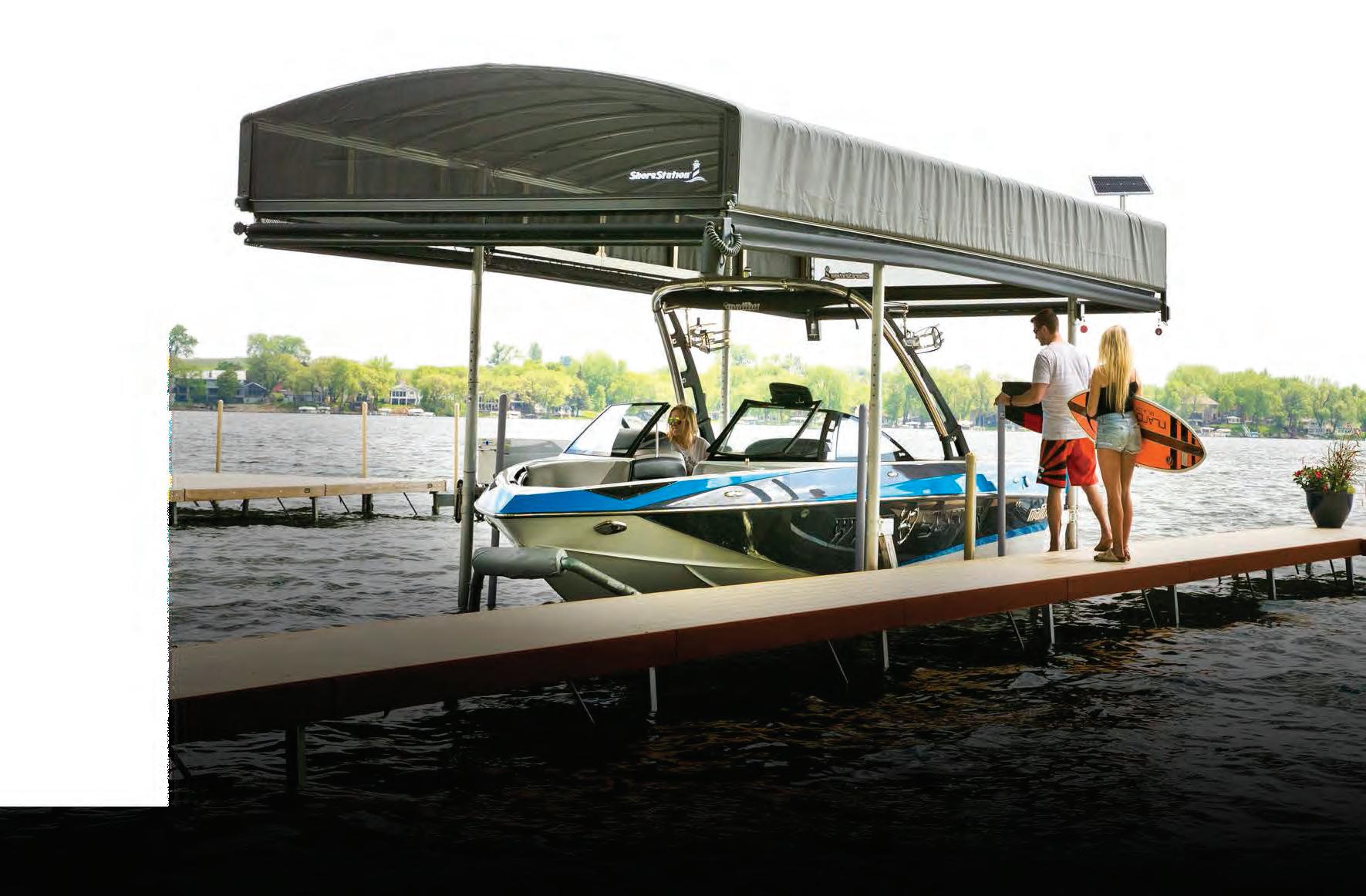

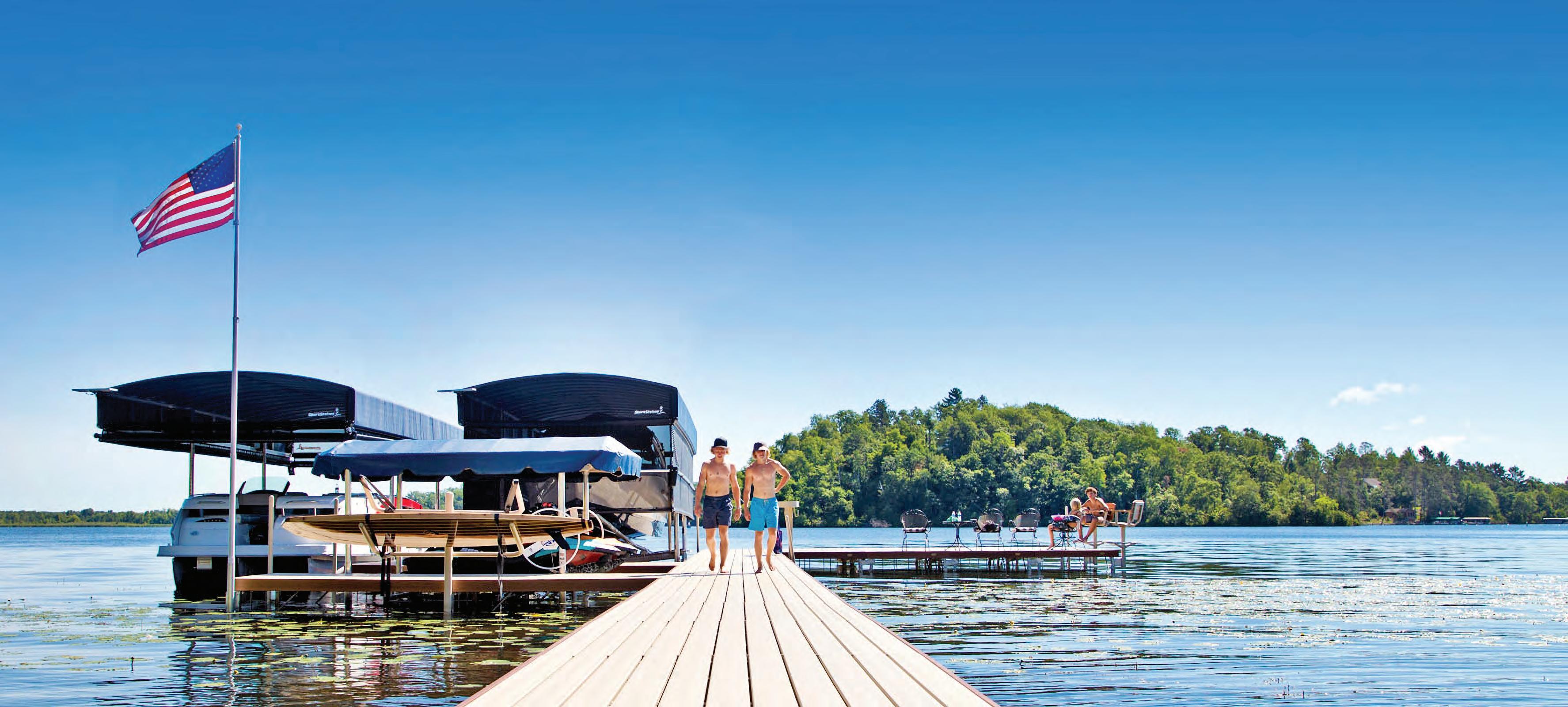


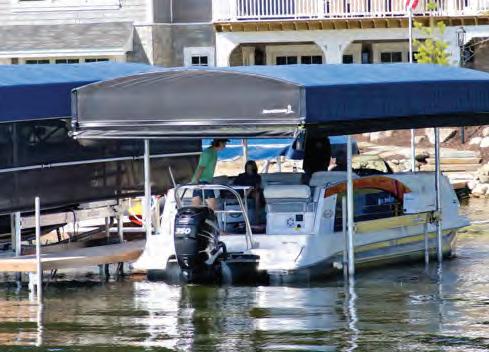
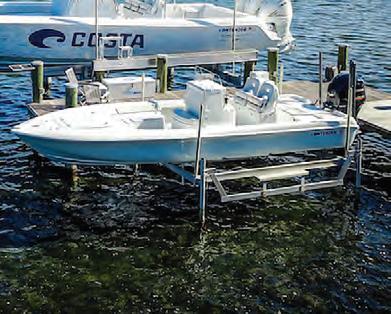
Equipped with exceptional weather resistant fabric and breathable SunTex 80 woven mesh ends for maximum protection and durability,

Made from the highest quality materials, our innovative hydraulic boat lift is one of the fastest and safest lifts on the market today. When you have a hydraulic lift, there’s no need to worry about wind and waves getting in your way. This lift will give you confdence to safely land and secure your boat in less-than-ideal conditions.
Never miss another moment on the water. Power your lift with clean, free solar power. Our speedy 20 watt charger features solar regulator drainage protection, saving your battery from permanent damage caused by overcharging.



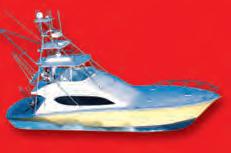







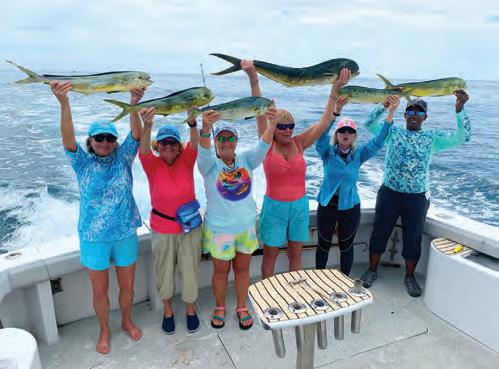

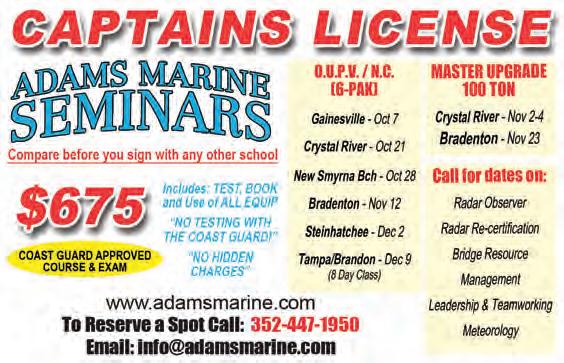






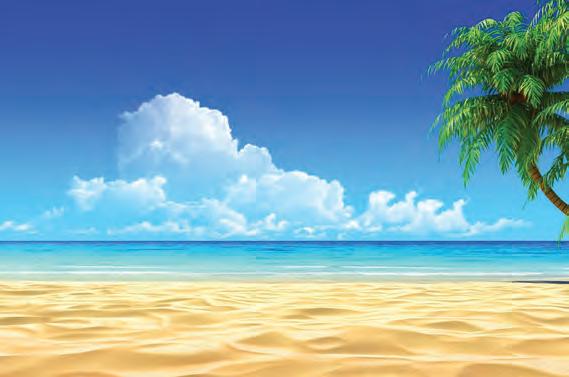





Fall fshing ofers anglers a perfect blend of cooler weather, stunning scenery, and active fsh. As summer fades, the changing conditions in freshwater and saltwater environments create ideal opportunities to catch a variety of species. Whether in lakes, rivers, or coastal waters, autumn provides some of the most rewarding experiences for fshing enthusiasts.
One reason fall is excellent for fshing is the behavior of fsh during this season. As water temperatures drop, fsh become more active, feeding aggressively to prepare for winter. In freshwater, species like bass, trout, and walleye move into shallower waters, making them easier to target. Bass, in particular, hunt more during the fall, feeding on schools of baitfsh in cooler, oxygen-rich waters.
Largemouth and smallmouth bass gravitate toward areas with abundant food sources. Anglers ofen succeed using lures that mimic baitfsh like shad and minnows. Crankbaits, jerkbaits, and sof plastics, especially in natural prey colors, are popular choices. Fishing near structures like submerged logs, rock piles, and weed beds can increase your chances of landing a big one, as bass ofen use these areas as ambush points.
Trout fshing also peaks in the fall, with cooler water temperatures bringing these fsh into more accessible parts of rivers and streams. Fly fshing is particularly efective during this time, as trout are more likely to strike at dry fies and nymphs resembling the insects they feed on. In many regions, fall is also the time for spawning runs, particularly for salmon and steelhead, ofering anglers a chance to catch them in large numbers amid stunning autumn scenery.
In saltwater, fall is synonymous with the migration of popular species like striped bass, bluefsh, and redfsh. As these fsh move along coastlines, following baitfsh like mullet and menhaden, they ofer exciting opportunities for surf and boat fshing. Te fall mullet run is a
I’ve spoken with and interviewed many anglers during my career as an outdoor writer. One of my favorite questions is, “Do you remember the frst fsh that you caught?” It’s amazing to me how many anglers do in fact remember the very frst fsh that they ever caught. Most recall every element involved in that frst catch. All seem to instinctively smile when recounting the event. It’s a fond memory, one that glistens each time it’s retold.
Tis right of passage can occur at any age. For me I was four years old standing beside a small pond with a cane pole, red and white bobber and baited hook in the water, with my dad kneeling beside me. I remember that it was a sunny day and that we were both smiling.
As the bobber went under my dad said, “Catch him, Son!” and I instinctively raised the cane pole to bring the brim to my dad’s reach. We put the fsh in a metal bucket full of water and I stared at it and observed it the entire ride home. I remember how proud my dad was as he shared the story of my catch with the rest of our family, and thus began a lifetime of catches and smiles and fond memories and a sense of pride and accomplishment. A lifetime of those wonderful elements thanks to my dad.
Teach a kid to fsh. Tey’ll likely never forget you, and you’ll likely change their life for the better.
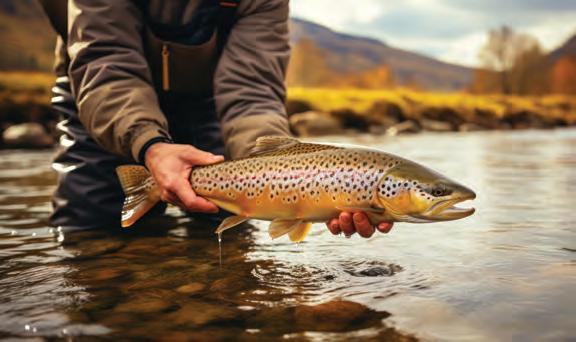
highlight for many saltwater anglers, drawing large predatory fsh close to shore where they can be targeted from the beach or pier.
For those targeting striped bass, the cooler fall waters bring these fsh into the shallows, making them more accessible to surfcasters and inshore anglers. Live bait like eels or bunker is ofen the go-to choice, but lures like topwater plugs, sof plastics, and bucktails can also be efective. Te sight of a striper smashing a surface lure in the crisp autumn air is an experience that keeps many anglers coming back year afer year.
Another advantage of fall fshing is the relative solitude. With many focused on hunting or other seasonal activities, fshing spots are less crowded than during the summer. Tis allows for a more peaceful experience, where you can fully immerse yourself in nature. Te vibrant fall foliage, combined with the quieter atmosphere, creates a perfect backdrop for a day of fshing.
Overall, fall fshing ofers something for every angler. Whether chasing bass in a quiet lake, casting for trout in a mountain stream, or battling gamefsh along the coast, fall provides unparalleled opportunities to connect with nature and enjoy the thrill of the catch.
By John Mosley
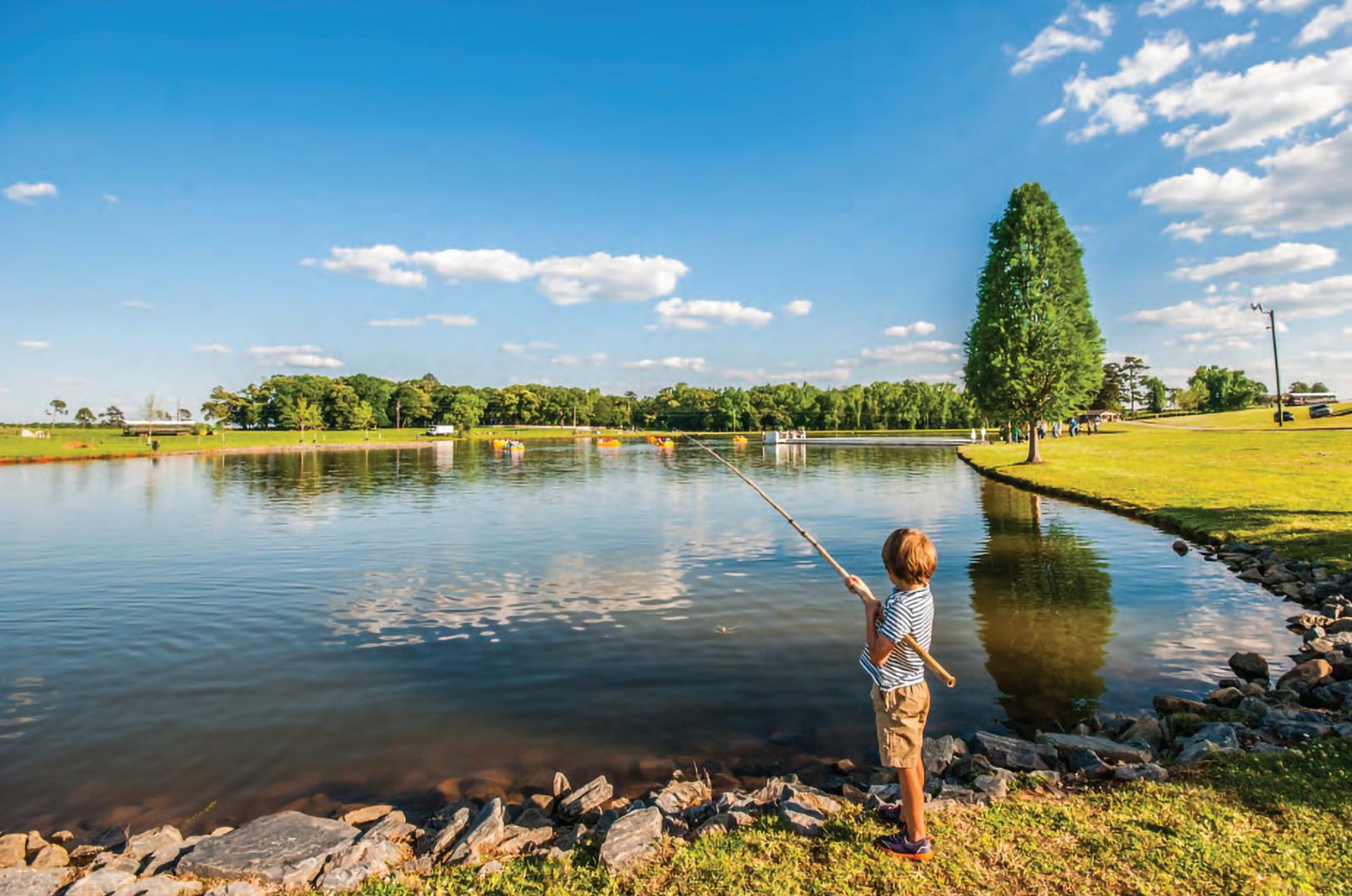




Relentless performance for every yacht, everywhere, every time. It is so much more than just bottom paint.








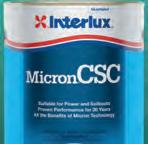



Interlux’s range of fouling control products not only improves your performance by protecting your hull from fouling, they also protect against the spread of invasive species, safeguarding your local waters when exploring new regions, therefore helping you make a difference by looking after the waters that have provided you with enjoyment and freedom for so many years.
Like you, we have a passion for boating. We provide boaters the hull protection they deserve with over 140 years of cutting-edge science, technology and expertise. You can expect only the best from every Interlux yacht paint product, providing you the confidence to explore your world.
Early morning fog and dropping water temperatures are a sure sign fall is near.

Yes, it’s that time of year when the big sheepshead and cool water redfsh invade the local deep-water docks and structures. Both species are tough opponents, challenging even the most skilled anglers.
Sheepshead are most likely to be found around docks where subsurface pilings are covered in marine growth like oysters and limpets, and where tiny crabs live inside. Extreme submerged structures such as rock outcrops or limestone ledges are good too.
Tis time of year, seek the larger redfsh around deep water docks where white bait and pinfsh congregate for protection, becoming a plentiful quarry. Both reds and sheepsheads like to use the current that brings food naturally in their direction, possibly using the pilings as an ambush point from which to launch their attack. Look in the proximity of extended dock systems and/or rough shoreline structure; lots of the bigger fsh are caught here.
Tiny crabs or sand feas will produce great sheepshead action. Live shrimp cut in half are my next “go to” bait. Seek docks with at least eight feet of water (10’ to 14’ is ideal). Cast to the base of the pilings. Ten tighten the line to feel the bite.
Small freelined pinfsh or live whitebait are great for reds as the water cools thru early October.
My neighbor Jerry claims, “Redfsh hate pinfsh. Tat’s why they are such good bait.”

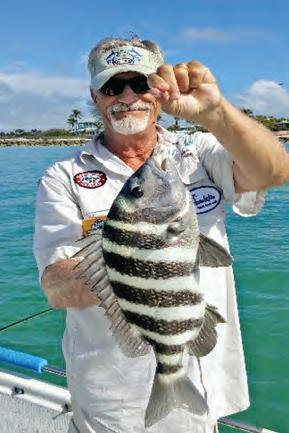
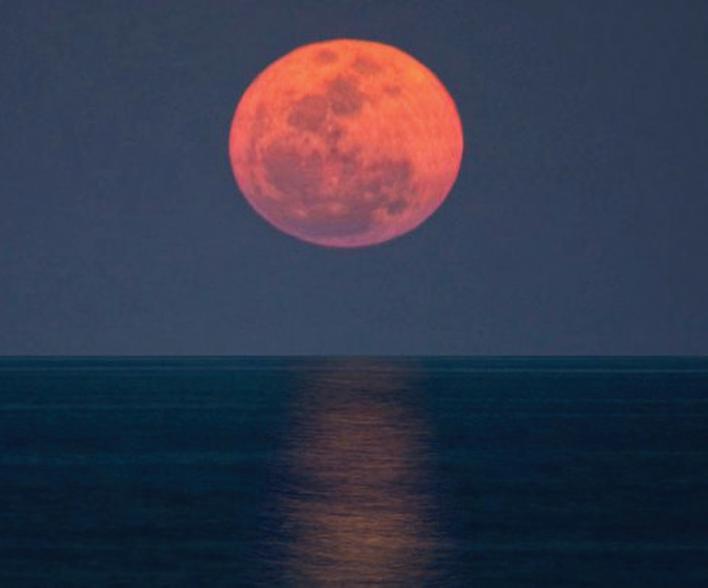
By CAM Staf
Anglers have long observed that fsh activity is infuenced by the lunar cycle, giving rise to what are now known as lunar tables. Tese tables serve as invaluable tools for predicting when fsh are most likely to be active and feeding. But how do lunar phases afect fshing, and how can anglers use lunar tables to their advantage?
A lunar table provides information on the moon’s phase and its position relative to the Earth and the sun. Tese factors signifcantly afect tides, which in turn infuence fsh behavior, especially in coastal and tidal waters. Te moon’s gravitational pull creates tides, and as the water moves, it stirs up nutrients and prey, encouraging fsh to feed.
Beyond tides, fsh have a circadian rhythm that governs their daily activities, including eating and resting. Many species, especially saltwater
“Really?” I said, “Reds hate pinfsh?”
“Yeah”, he said, “Pinfsh eat the redfsh eggs and the reds hate them.”
Now that’s some good information right there! I laughed and replied, “I did not know that!”
Oh well, to each his own.
OK, Jerry, if you say so.
I guess I’ll have to believe him because they do work well.
Cut ladyfsh tightlined on the bottom is always good.
Cooling fall waters are great for many species which include pompano, mackerel, sheepsheads, trout and reds. Find some good structure or a vacant dock and give it a go.
I wish for you a most enjoyable and productive day on the water while in pursuit of your fall quarry.
Capt. Russ Walker is a USCG Masters licensed fshing guide and owner of Tide Walker Charters out of Cape Coral, FL. www.tidewalkercharters.com.
fsh, also follow a lunar rhythm directly infuenced by the moon’s phases. Fish tend to be most active during the new moon and full moon phases, when tidal movements are more pronounced and feeding conditions improve.
1. New Moon: During the new moon, when the moon is between the Earth and the sun, strong “spring tides” occur due to the combined gravitational forces of the sun and moon. Tese heightened tides trigger more active feeding, particularly inshore and near tidal fats.
2. Full Moon: Like the new moon, the full moon also causes strong spring tides. Fish, especially predators, are more active at night during this phase, taking advantage of the increased light for hunting.
3. First and Last Quarter: Tese phases generate weaker “neap tides,” with less pronounced tidal changes. Fishing can still be productive, but fsh activity is generally reduced compared to the new and full moon phases.
Lunar or solunar tables break down the moon’s infuence into specifc time slots for optimal fshing, categorizing them into “major” and “minor” feeding periods. Major periods occur when the moon is directly overhead or underfoot, while minor periods happen when the moon is on the horizon. Major periods generally result in higher fsh activity, although both are useful for timing fshing trips.
Most lunar tables are simple to read, ofen color-coded for clarity. High fsh activity times may be highlighted in green or red, while less favorable periods might appear in blue or gray. By planning your fshing trips around these prime times, you can increase your chances of success.
However, lunar tables are just one factor among many. Weather, water temperature, and the habits of specifc fsh species also play crucial roles. For instance, overcast conditions during a full moon can reduce visibility, hindering feeding, while high winds or changing barometric pressure may alter fsh behavior.
Lunar tables are a valuable tool for anglers seeking to maximize their success. Understanding the moon’s phases and their efect on fsh behavior, especially during new and full moon phases, can help you plan fshing trips during peak activity periods. Although they don’t guarantee a catch, combining lunar tables with local knowledge and weather conditions can signifcantly enhance your chances of a productive day on the water.
Introducing kids to the sport of hunting through squirrel hunting can be an excellent way to nurture a lifelong appreciation for nature and outdoor skills. Squirrel hunting ofers a relatively safe, manageable, and rewarding experience for young hunters. Tese small game animals are abundant and found in many habitats, providing ample opportunities for success, which is crucial for keeping kids engaged.
Squirrel hunting teaches essential hunting skills such as patience, observation, and marksmanship. Because squirrels are agile and quick, young hunters learn to move quietly and hone their ability to spot subtle movements in the trees. Tese skills are foundational for all types of hunting, making squirrel hunting a great starting point.
Moreover, squirrel hunting emphasizes safety and ethics, as kids learn to handle frearms responsibly, understand hunting laws, and respect wildlife. Parents and mentors can use this experience to instill values like conservation, teaching kids about sustainable practices and the importance of preserving natural habitats.
Te physical demands of squirrel hunting are also suited for young hunters. It typically involves moderate walking and the excitement of a successful hunt is an excellent way to build a child’s
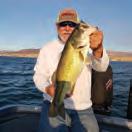

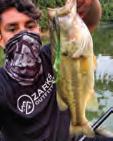
confidence and interest in the outdoors.
By Benjamin Babcock
Overall, squirrel hunting is not only a gateway to the broader world of hunting but also a meaningful way to bond with children and introduce them to the principles of responsible, ethical, and sustainable hunting practices.
Te .410 over-under shotgun is an excellent choice for a child’s frst frearm, ofering a combination of safety, versatility, and ease of use that makes it ideal for young or novice shooters. Tis type of shotgun typically has two barrels stacked one on top of the other, which gives it a balanced feel and allows for quick target acquisition, making it easier for kids to handle and shoot accurately.
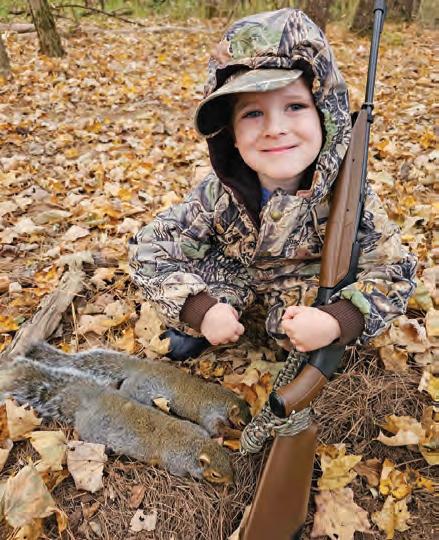
One of the main advantages of a .410 shotgun is its low recoil. Te .410 is known for being a “light” shotgun, meaning it doesn’t have the heavy kick associated with larger gauges. Tis is particularly important for young shooters, as it allows them to focus on learning proper shooting techniques without the fear of painful recoil, which can discourage continued practice.

Te over-under design also emphasizes safety. With its simple break-action mechanism, it’s easy
carried safely in the open position when not in use. Additionally, the .410’s limited range and pellet spread make it a good learning tool, encouraging kids to develop accuracy and precision.
Te versatility of the .410 makes it suitable for various types of hunting, from small game like squirrels and rabbits to clay target shooting. As a child’s skills and confdence grow, the .410 over-under shotgun can serve as a reliable and consistent companion, helping them build a strong foundation in shooting sports. Overall, it’s an excellent starter gun that balances ease of use with the challenge necessary to develop profciency.
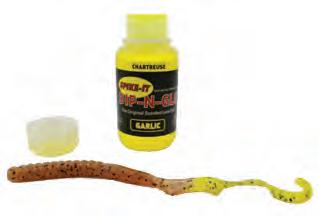


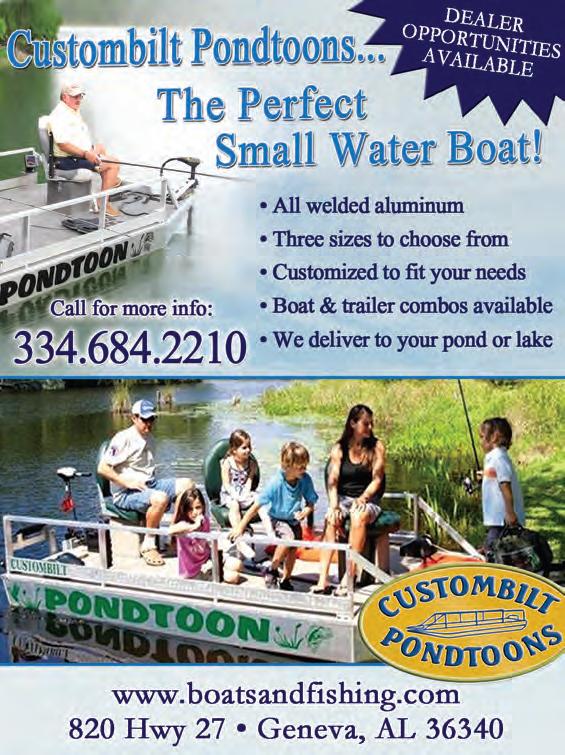
By Capt. Quinlyn Haddon

Throughout the month of October, the fishery in The Florida Keys will begin its autumn transition. This midway point between the drastic change of summer and winter fishing, can be unpredictable to forecast, but also provides exciting surprises during this overlap.
With cooler waters driving fish nearer to shore, reef and backcountry fishing will become more and more productive as we push into our winter fishery. The bait fish that particularly favor our shallower waters as the temperatures drop, will bring with them some of our favorite winter predators. Depending on the timeline of this seasonal change, we may begin to experience the return of sailfish and wahoo near our reef.
The anticipated temperature change of the water not only drives fish closer to shore, but is also a massive trigger for southbound migration. This is especially true for one of the ocean’s most notable vagrant; the swordfish. Fully understanding the habits of a fish that can migrate hundreds of feet up and down the water column each day, and thousands of miles each year,
can be a challenging endeavor. However, the data that has been collected on swordfish to date, has proven to be reasonably consistent.
The majority of mature swordfish, and particularly large breeding females, have been observed to spawn predominantly in the spring and summer. They favor warm waters with heavy currents for this process, which takes them as far south as the Caribbean sea. After abandoning their millions of eggs to the currents, they will begin an incredible migration in search of feeding grounds to sustain them repeating the process all over again.
Traveling thousands of miles up the coast, as far as Newfoundland, Canada, they seemingly utilize the continental shelf has a highway.
After gorging in these northern waters throughout the summer and early autumn, they then begin their return migration through our section of the swordfish highway, opportunistically feeding along the way.
While every month in the Florida Keys provides excellent opportunity to catch swordfish, this month gives us an extra bump on prevalence of larger swordfish migrating through our waters. The same is true for November as well, but with more chances of tackling windier days, October offers a more reliable forecast.
Catching swordfish is a great way to fill the box with a significant amount of quality meat. The yield of a single fish is more than enough to fill both your refrigerator, and when properly sealed, your freezer too. The unique flavor and texture of swordsteaks is sought after on its own, but there is always a chance that your catch is concealing an upgrade. In very rare instances, a swordfish’s meat will appear orange in color as opposed to the standard white. The quality of this meat is unparalleled, and is caused by the fish’s penchant for munching on shrimp. These special upgraded fish are referred to as pumpkin swordfish. How perfectly festive it would be to carve one of these this month.
The Florida Keys not only boasts an excellent fishery for swordfish, but can also get you there in about a 30 mile run offshore. This gives you a chance at a fish at a lifetime in half the time and cost of a west-coast grouper trip.
If this fish is on your bucket list, October in the Florida Keys presents a great opportunity to add that checkmark.
Capt. Quinlyn Haddon guides with Sweet E’nuf Charters out of Marathon, Florida Keys. Contact her at (504) 920-6342 or Captainquinlyn.com. Find her on social @captainquinlyn.







If your device has an LCD that has faded over time, or want to inquire about possible repair options for your unit, give us a call or visit our website!











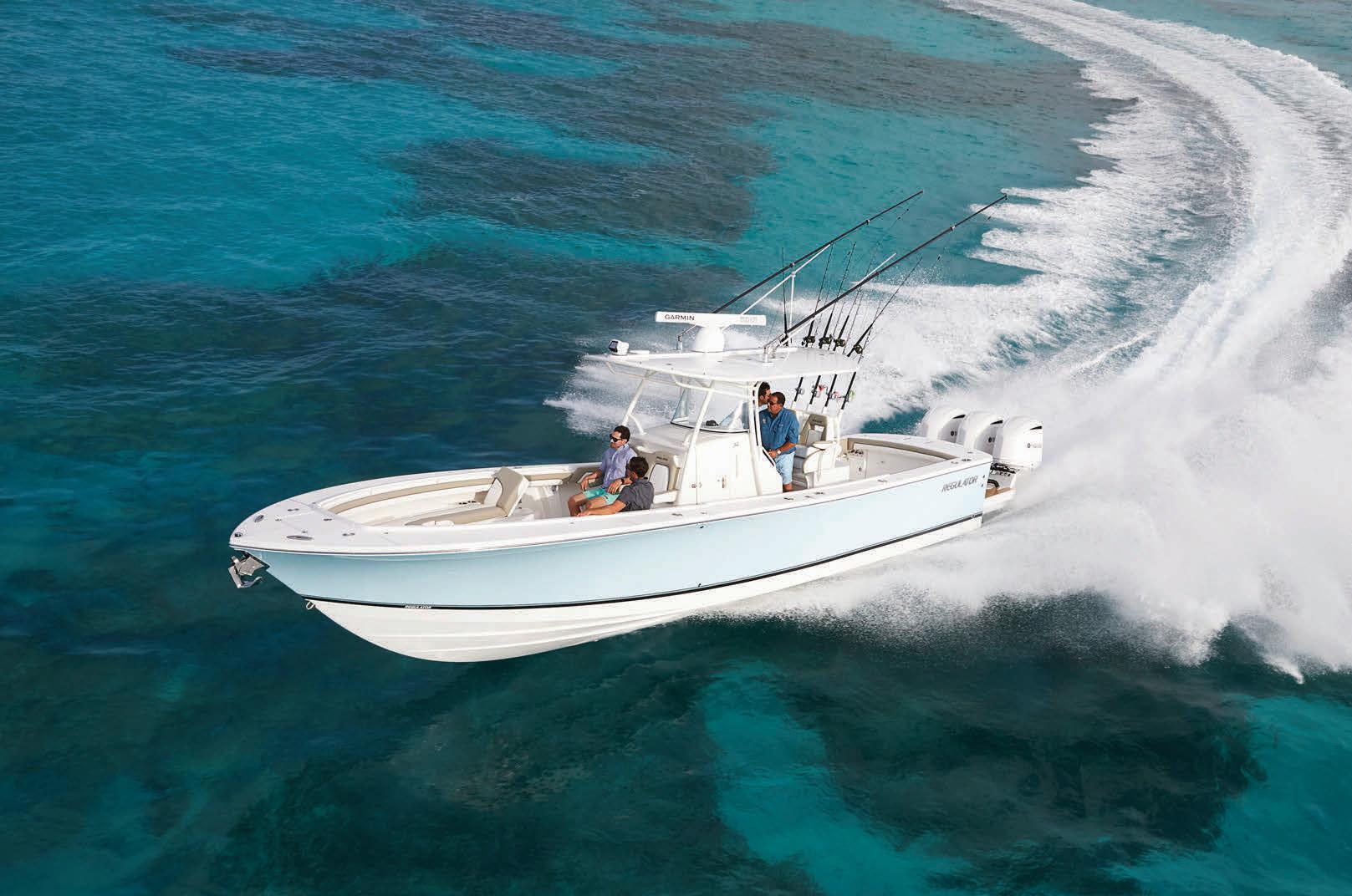
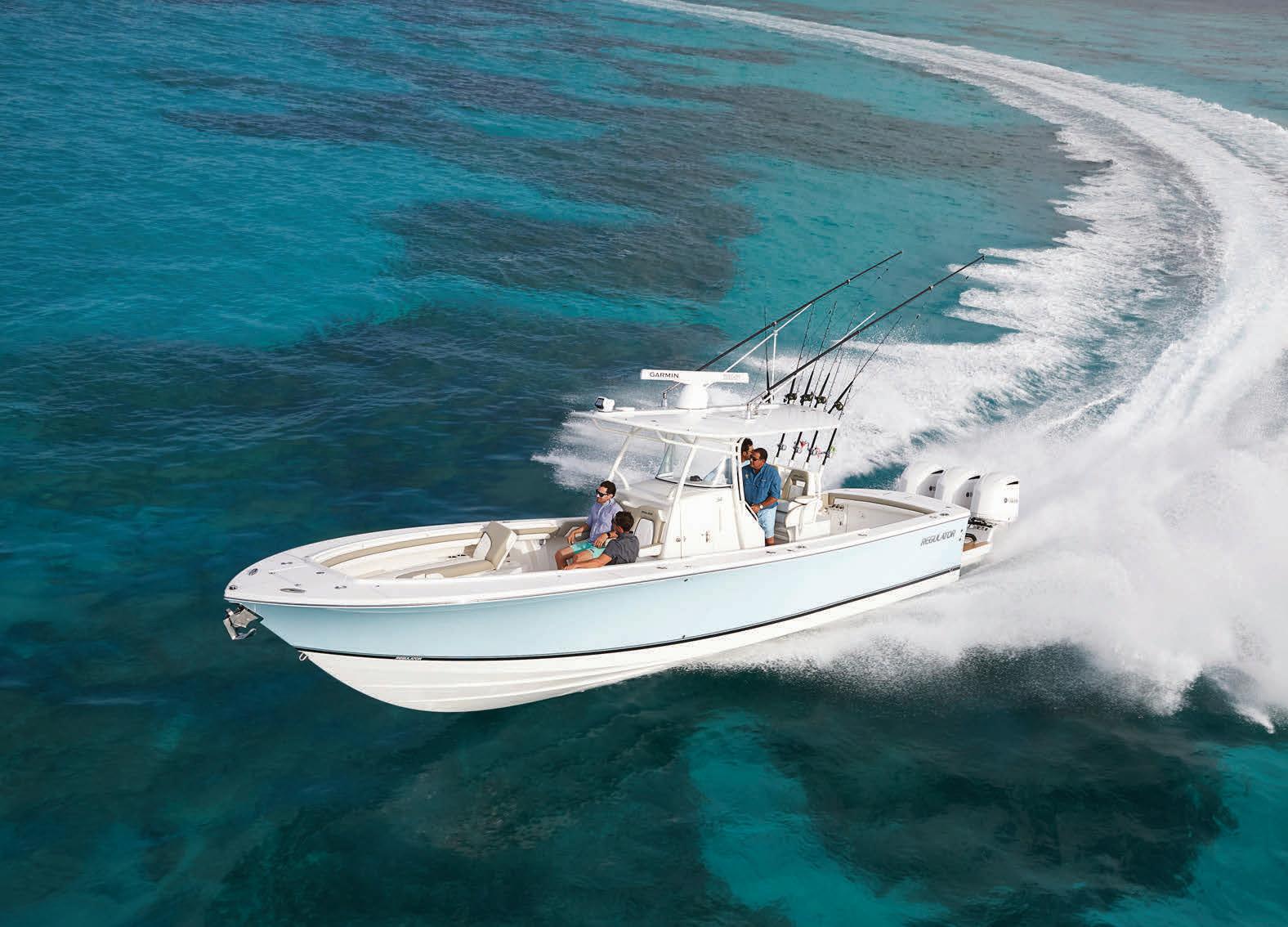



Boat Fix, a recreational boating telematics company that provides a combination of real time remote monitoring, GPS tracking, sophisticated geofencing, and 24/7 live customer support, announced today its Admiral Club Member sponsorship of the National Safe Boating Council (NSBC).
“At Boat Fix, safety is in our DNA and our goal is to promote safe, secure, and stress-free boating,” said Steve Pitsos, CEO, Boat Fix. “To support the NSBC at this level aligns with this vision. We are excited to be a part of the organization and thrilled to help them in their mission of advocating for a safer boating culture.”

“We are very grateful for the support of companies like Boat Fix,” said Peg Phillips, Executive Director, National Safe Boating Council. “Promoting safe boating takes constant education and outreach to the boating community. Only through the support of like-minded companies can we accomplish this vital mission.”
Boat Fix is more than a feet management and monitoring solution. As a tool for safer boating and boat ownership, the Boat Fix app sends real
time weather alerts and small craf advisories including wave height, visibility, and wind speeds based on the boat’s location; ofers geofence protection; safety checklists of U.S. Coast Guard required equipment including calendar reminders with fre extinguishers and fare expiration dates and helps ensure that the correct number of life jackets are on board to be worn; pre- and postdeparture checklists to help verify all systems are functioning properly; as well as remote


monitoring of battery voltage – including ultra-low, low- and high-voltage which is critical for preventing degradation of battery life and avoiding potential fres or explosions. In addition, the Boat Fix app provides advanced navigation with NOAA charts with detailed navigation marks and depths, rather than industrystandard Google Earth maps.
Users of the Boat Fix Pro app can communicate with the 24/7 Boat Fix team at the touch of a button, through voice, text, email, or two-way video chat to answer questions and diagnose issues on the water. Every call is answered in seconds, in person, by trained professionals ready and willing to help. Te industry-exclusive 24/7 Emergency Mechanical Helpline ensures boaters have immediate mechanical assistance over the phone if issues occur on the water. Te 24/7 Boat Fix Control Center also monitors unauthorized use and boat-thef prevention and can share your boat’s exact location with law enforcement.
Founded in 1958, the National Safe Boating Council serves as a national catalyst for developing a safe boating culture by providing educational resources, outreach programming, and training opportunities for industry partners and the boating community to infuence fun, safe, and responsible boating.
By Tracy Patterson

In the last decade, fshing has seen a signifcant transformation with the rise of female anglers. Once a male-dominated activity, more women are now not only participating but also excelling, reshaping the fshing community and breaking down stereotypes.
According to the Recreational Boating & Fishing Foundation (RBFF), the number of female anglers in the U.S. has increased by nearly 20% over the past ten years. In 2020, around 17 million women fshed, making up nearly 40% of all anglers. Tis shif refects broader changes in societal attitudes toward women in traditionally male-dominated activities.
Female anglers are challenging long-standing stereotypes. Fishing, ofen seen as a rugged, solitary pursuit for men, is proving to be a universal activity. Women are demonstrating that anyone can enjoy fshing, regardless of gender.
Social media has been crucial in this shif. Platforms like Instagram and YouTube have allowed female anglers to share their experiences and successes with a global audience. Infuential anglers like April Vokey and Kristine Fischer are showing that women can excel in all aspects of the sport, encouraging more women to try fshing.
Te fshing industry has responded by creating more inclusive products and marketing campaigns. Companies now design gear specifcally tailored to women, such as fshing rods with smaller grips and clothing lines that blend functionality with style. Brands are also increasingly featuring women in their advertising, making fshing more accessible and inclusive.
Te rise of female anglers has also had positive social and environmental impacts. Women who fsh ofen involve their families, leading to an increase in family fshing trips and fostering a love for the outdoors in the next generation. Additionally, women are playing a key role in conservation eforts, advocating for sustainable fshing practices and protecting aquatic habitats.
Organizations like Casting for Recovery are empowering women through fshing, ofering programs that combine the sport with wellness and community-building activities. Tese initiatives introduce more women to fshing while promoting physical and mental well-being.
As more women continue to enter the sport, they inspire further innovation and inclusivity within the fshing community. Te rise of female anglers is a testament to the power of diversity and the enduring appeal of fshing as a sport for everyone.




